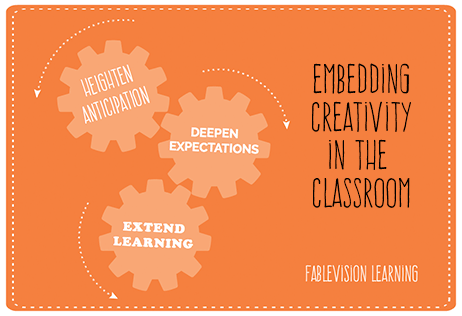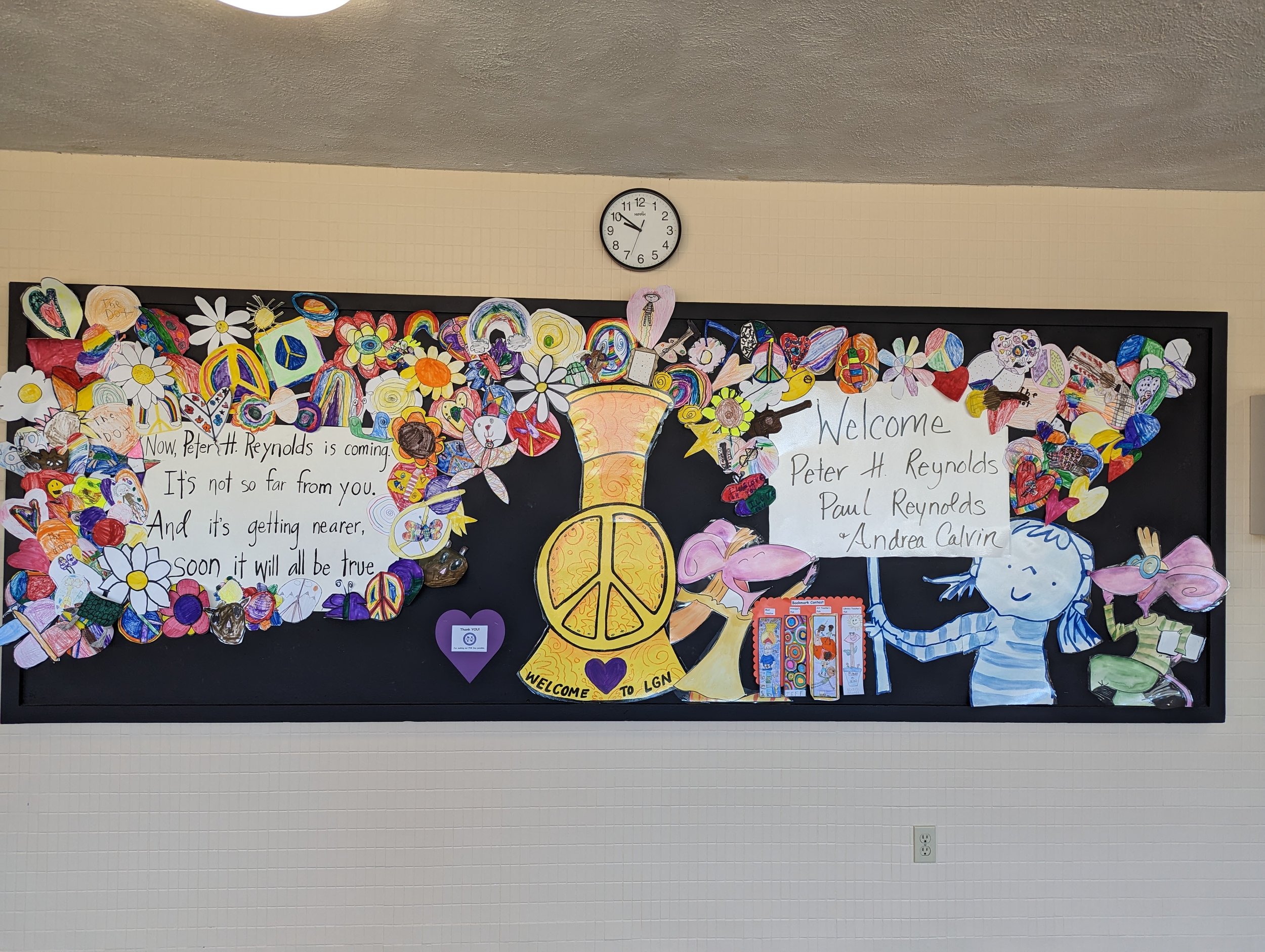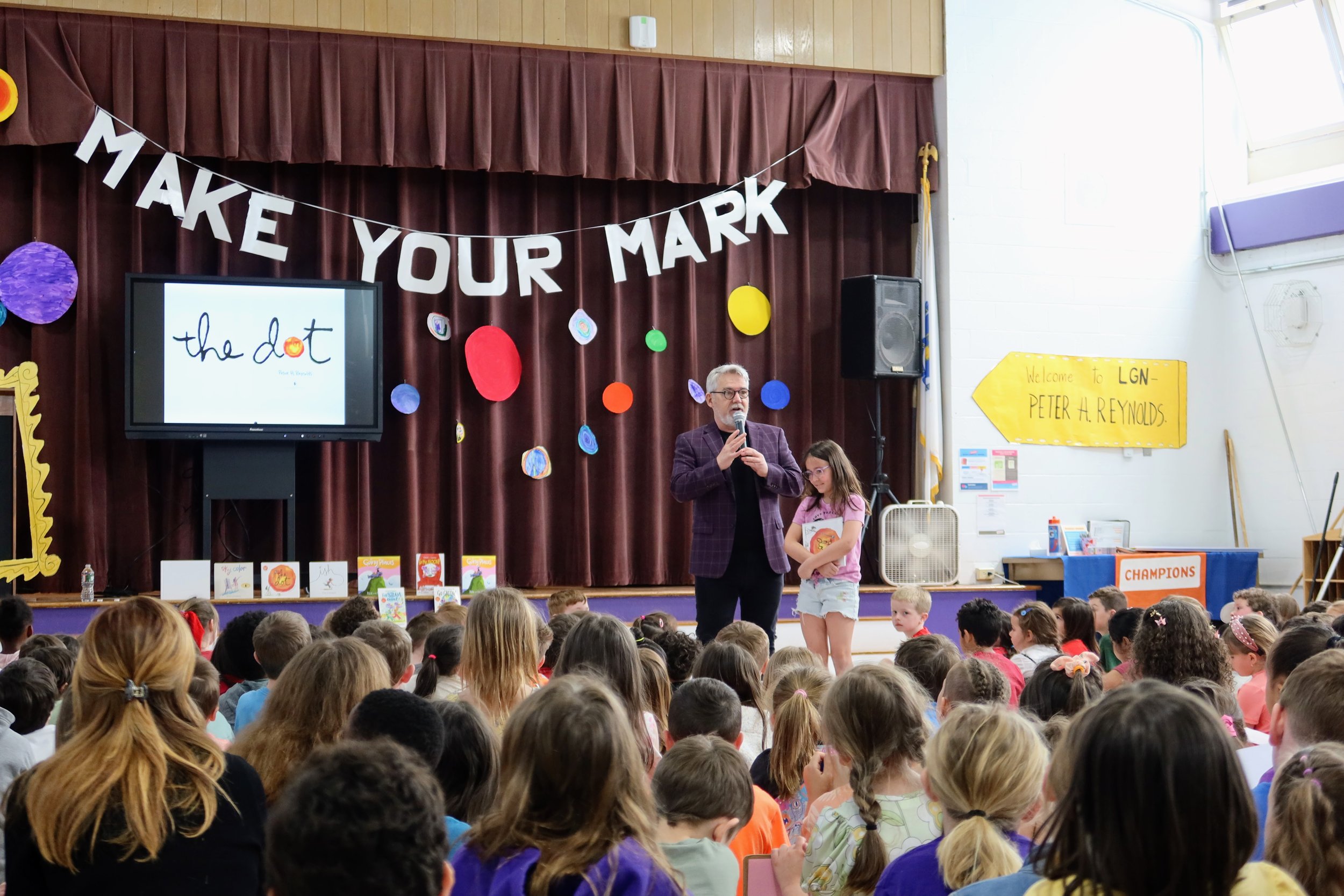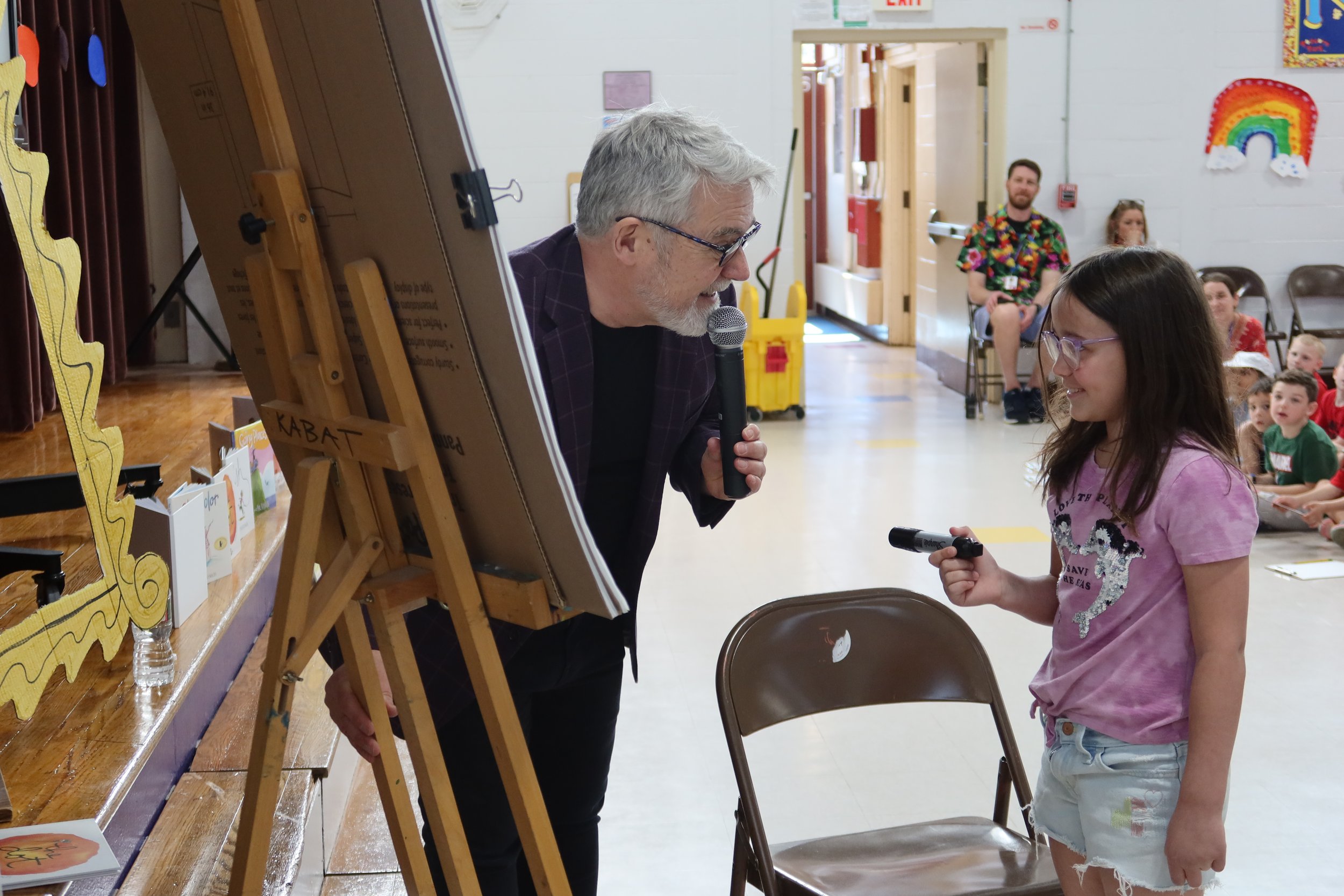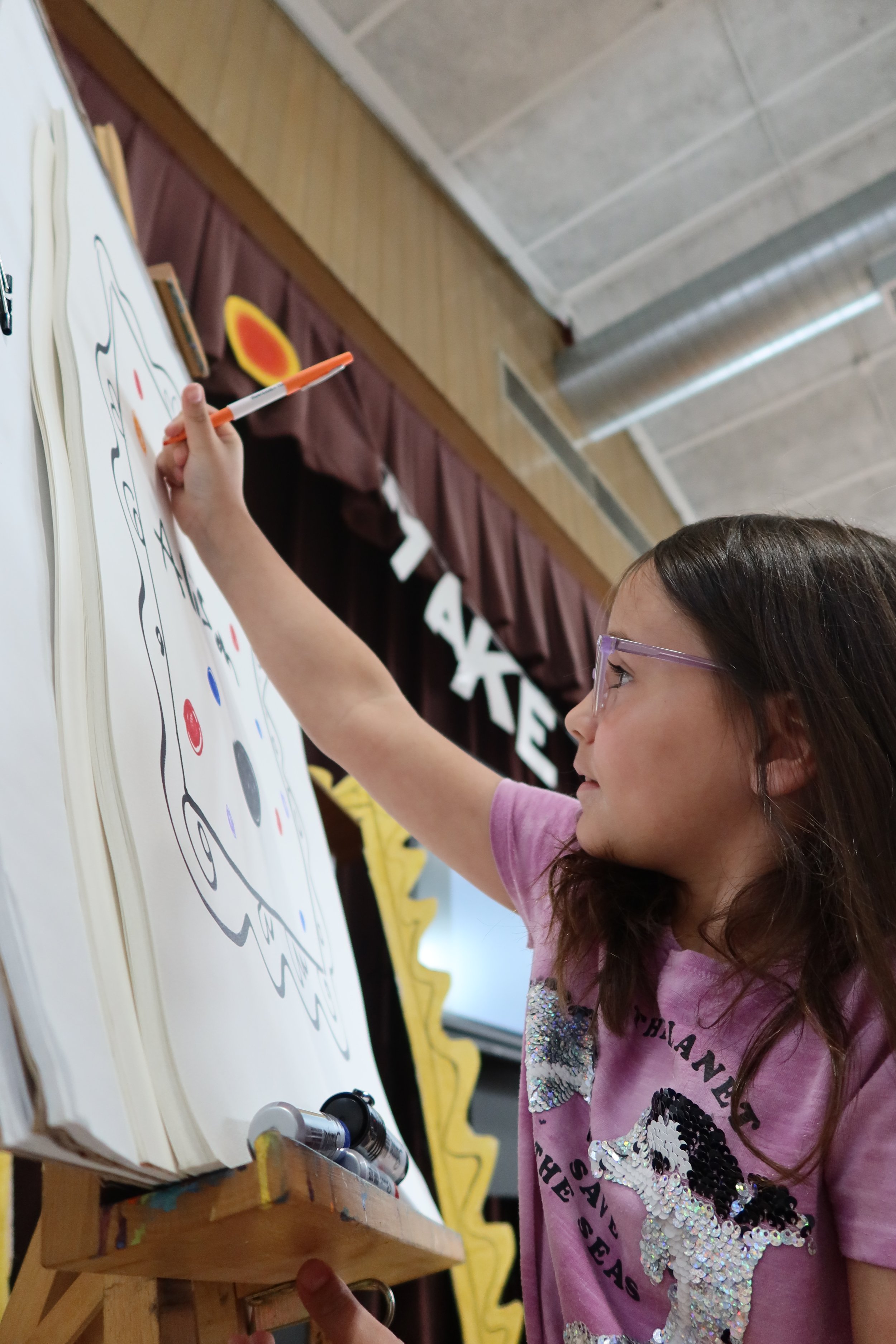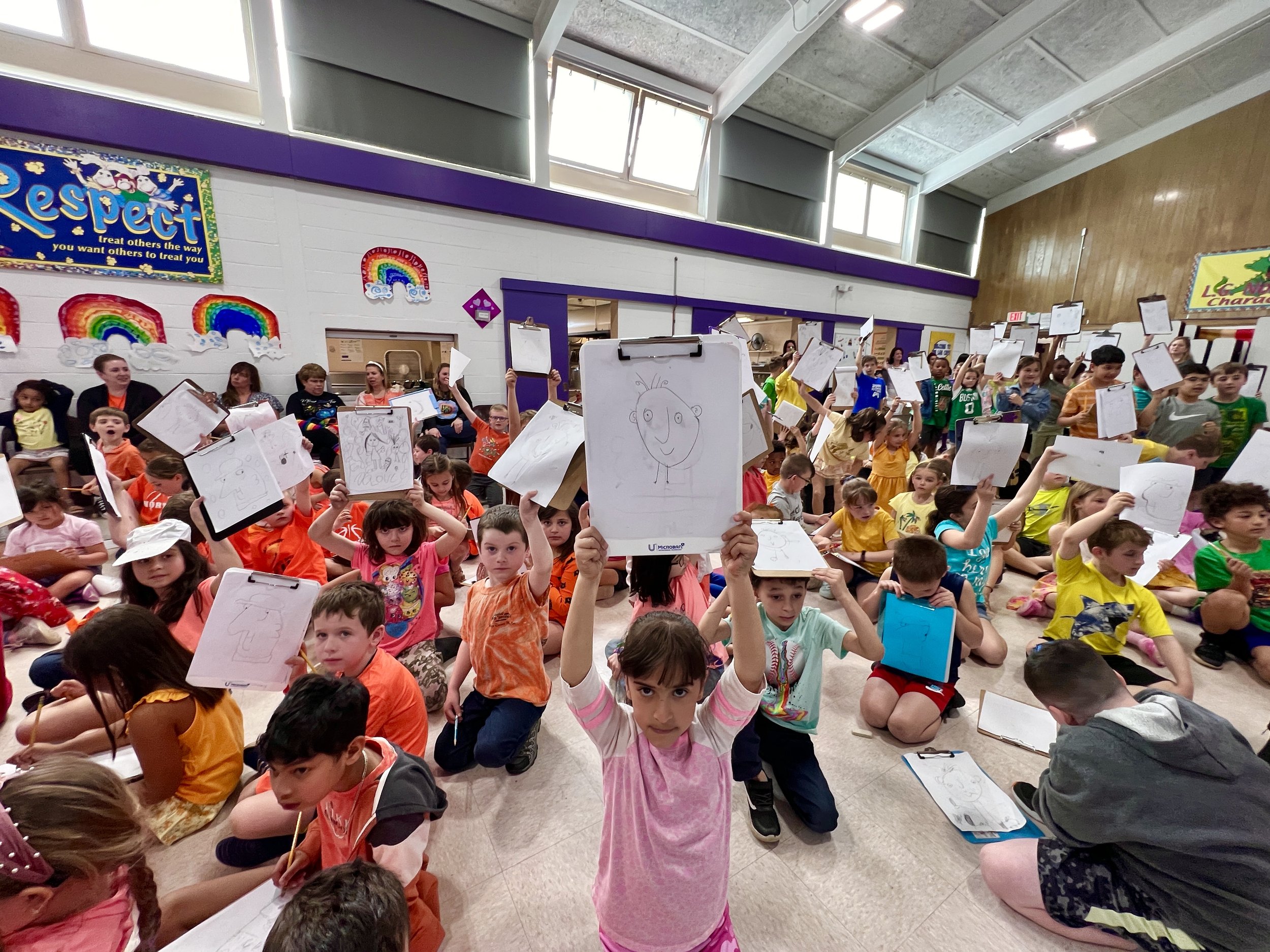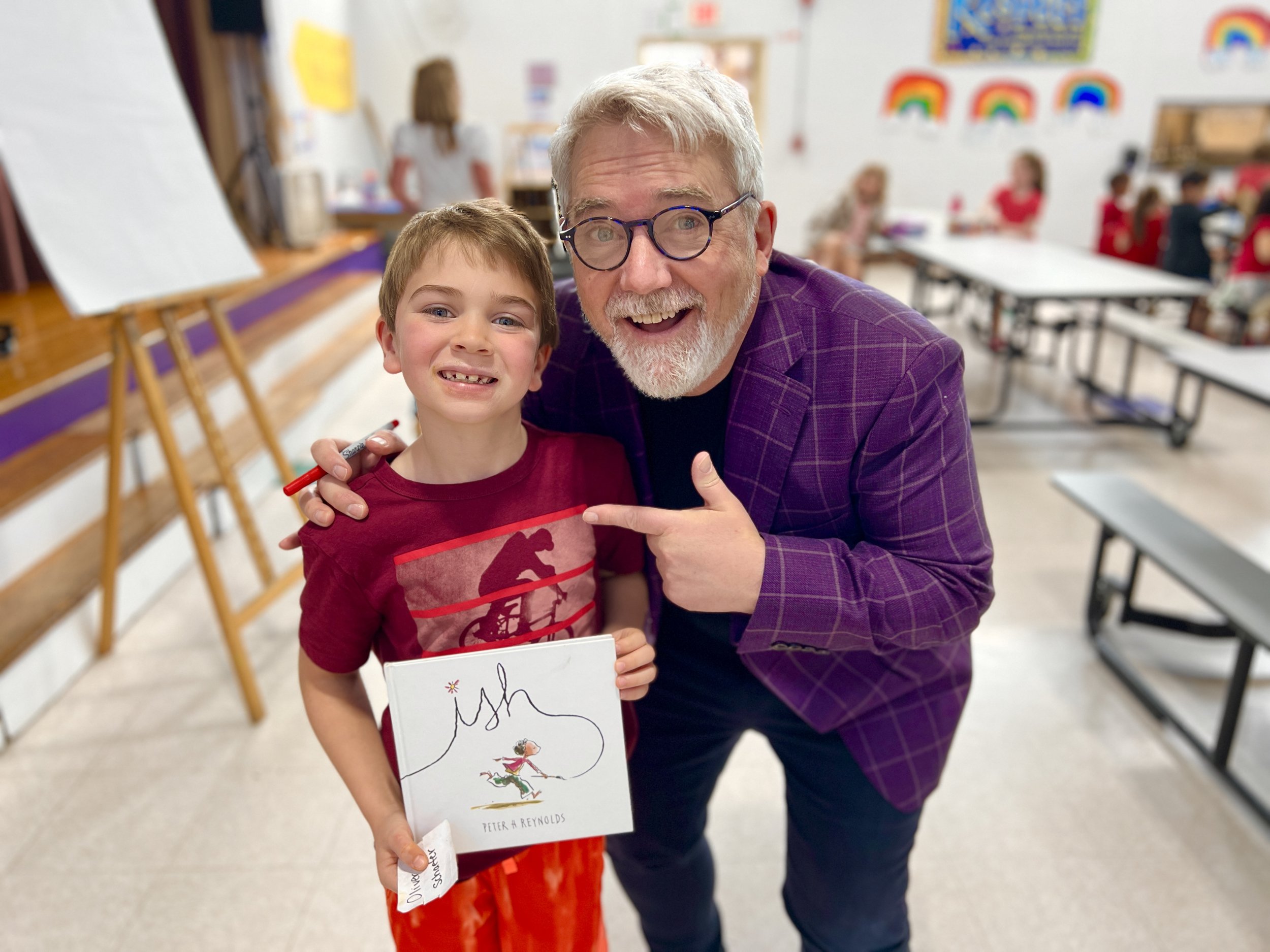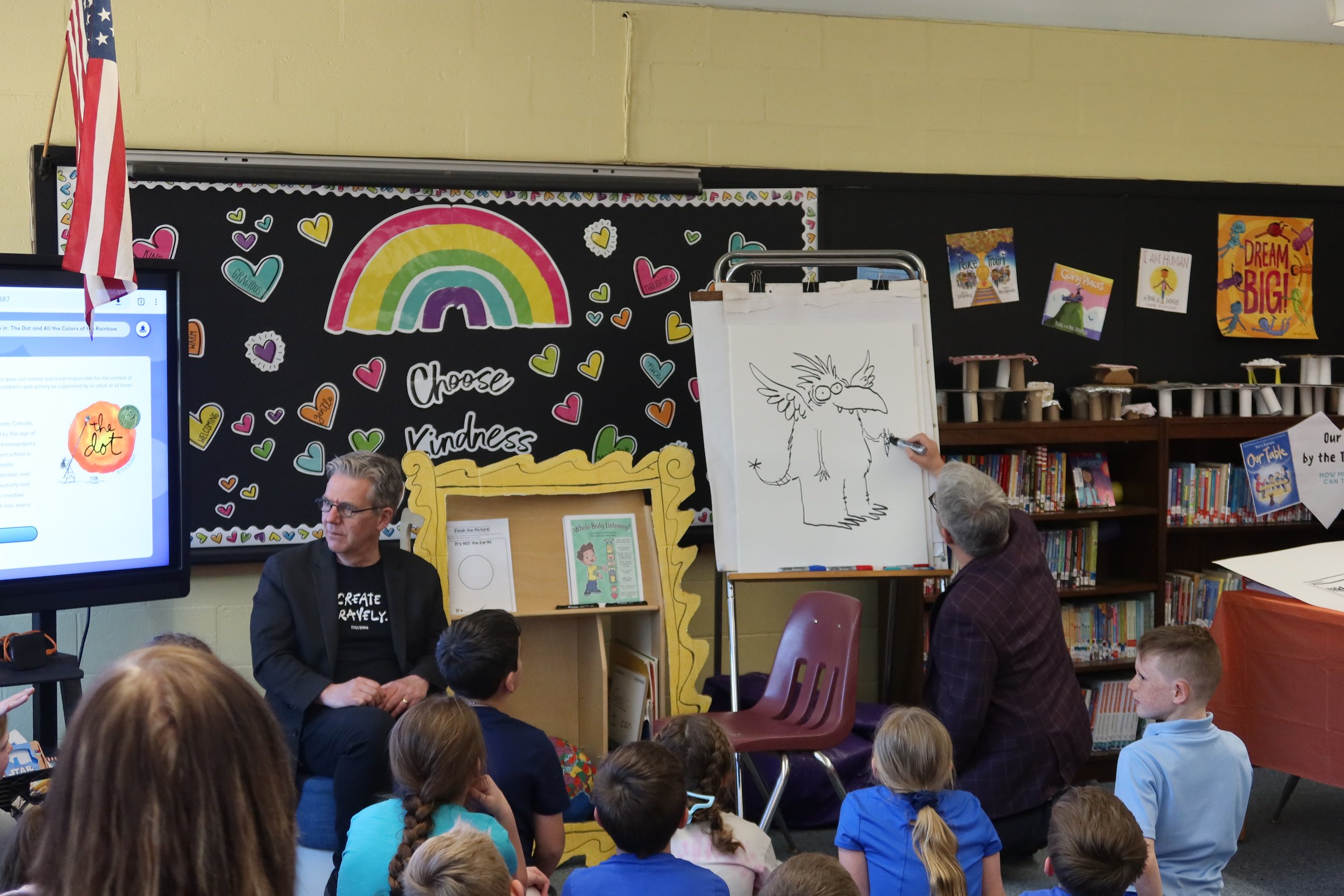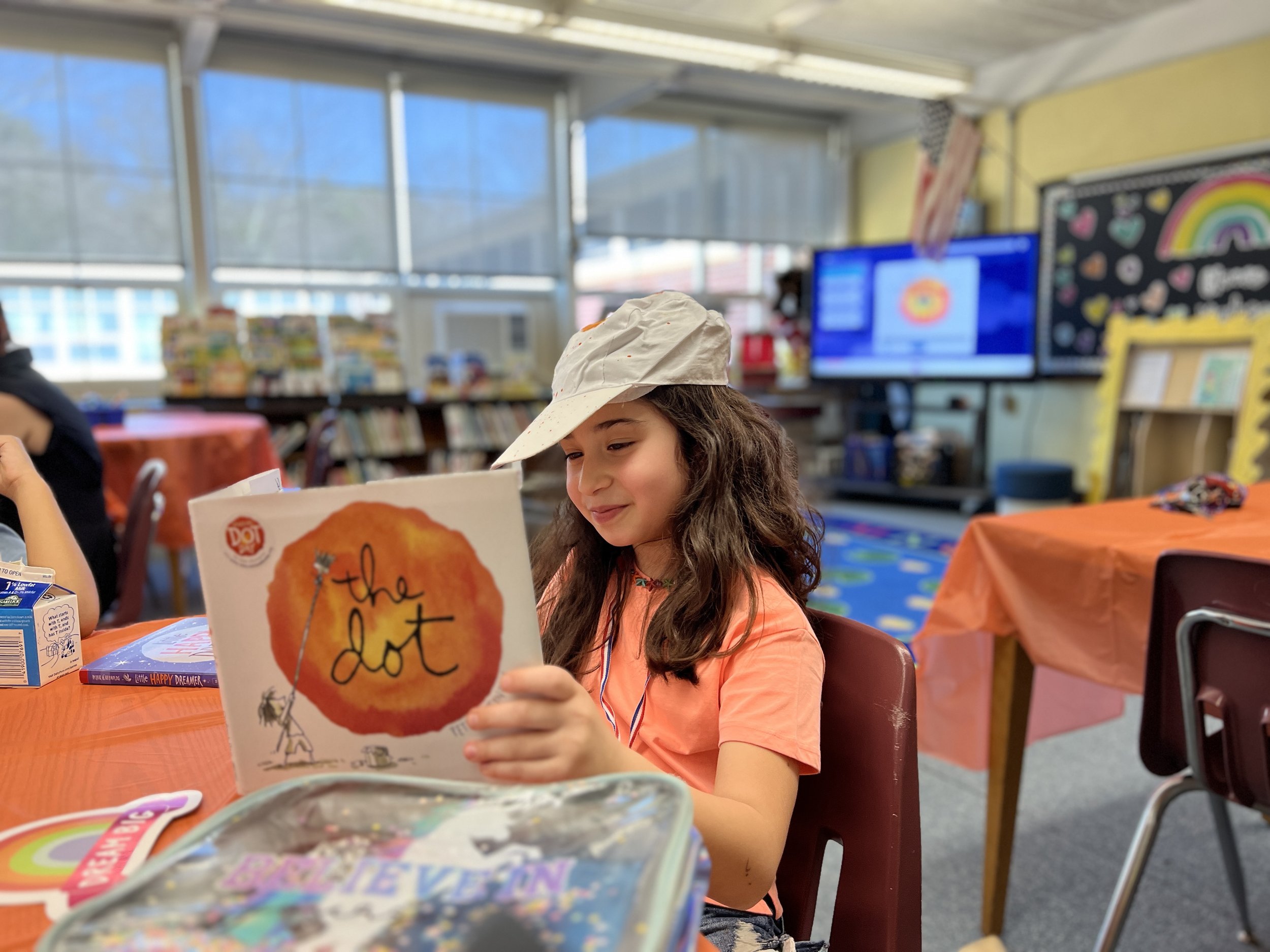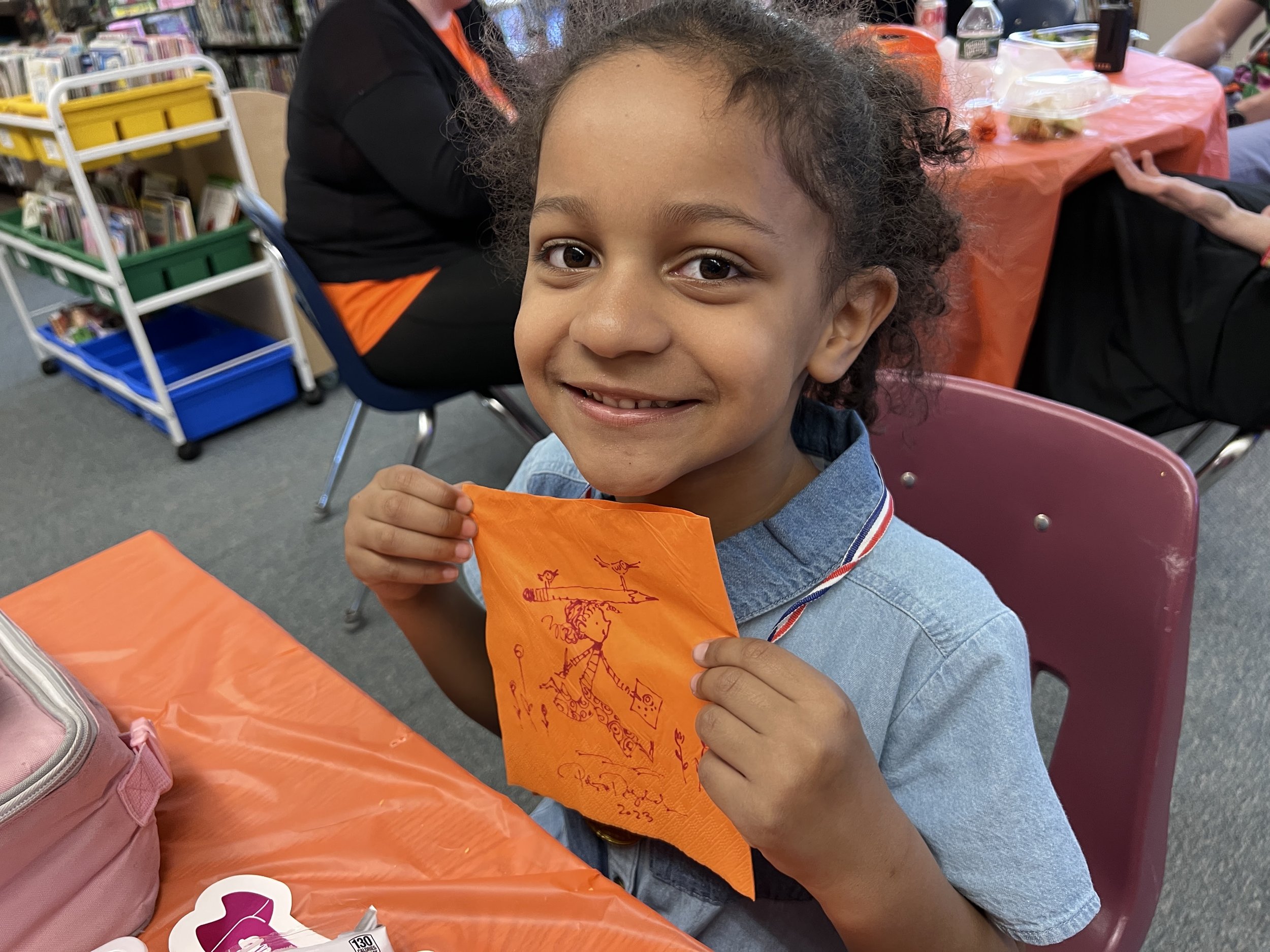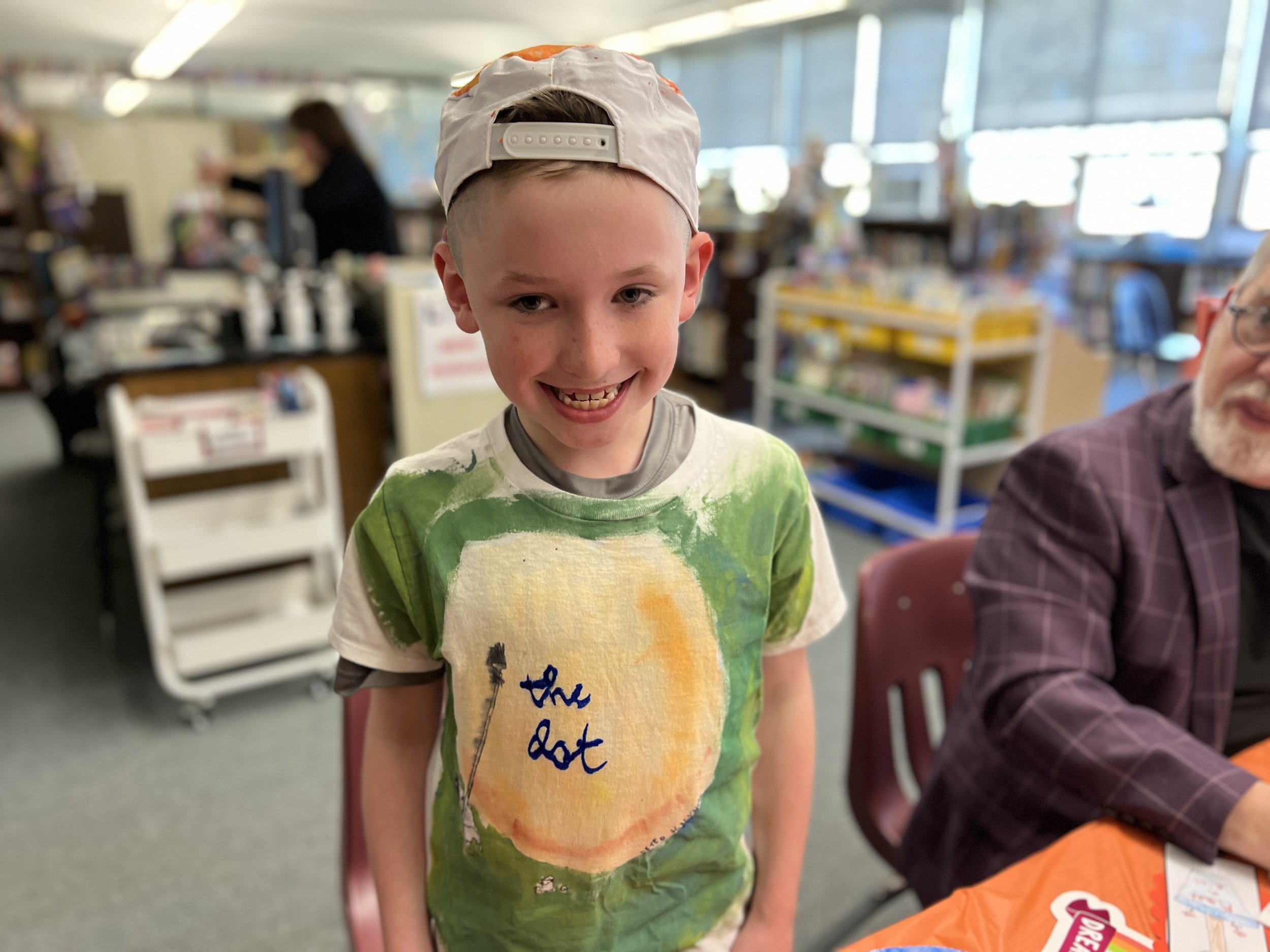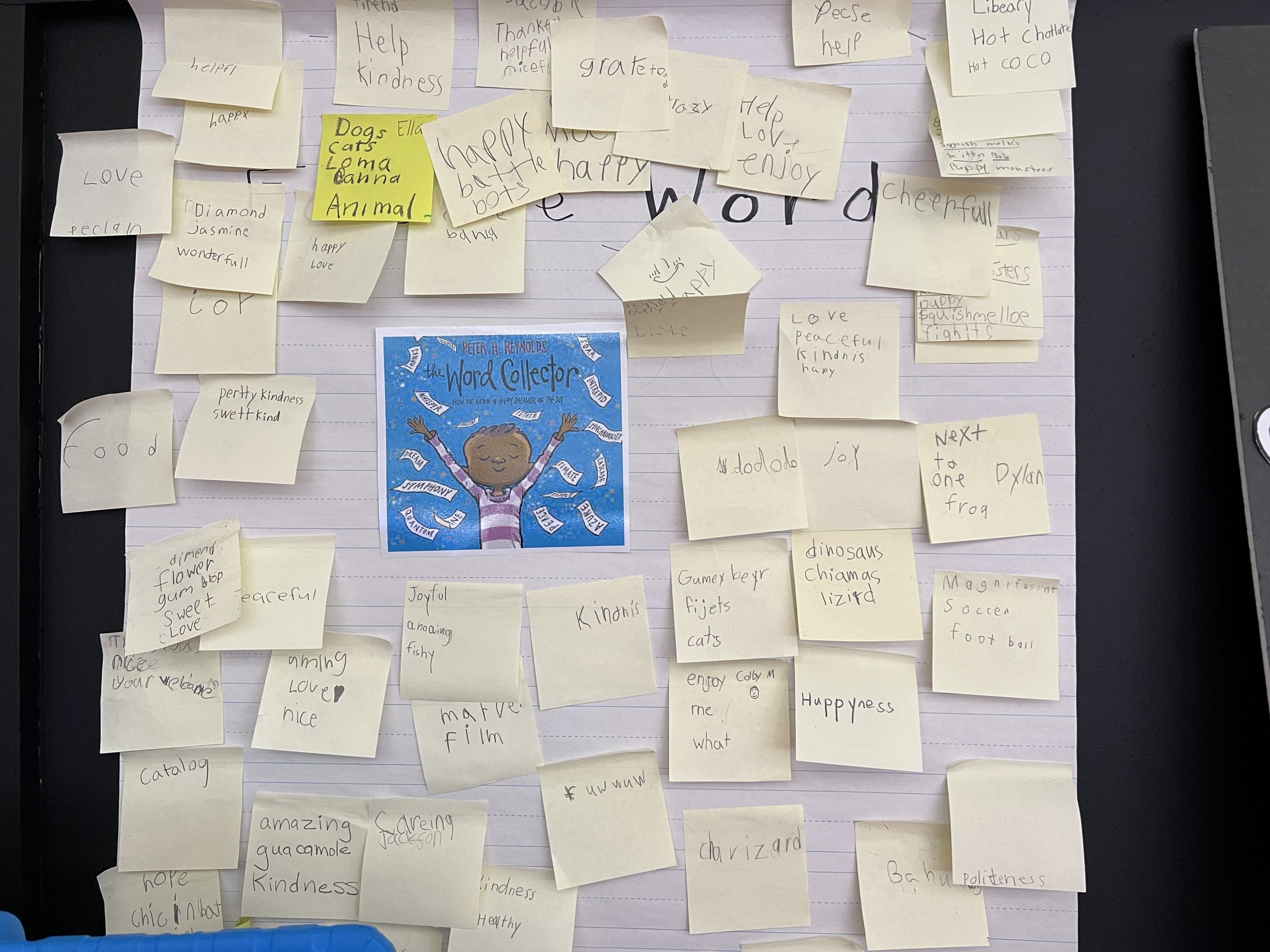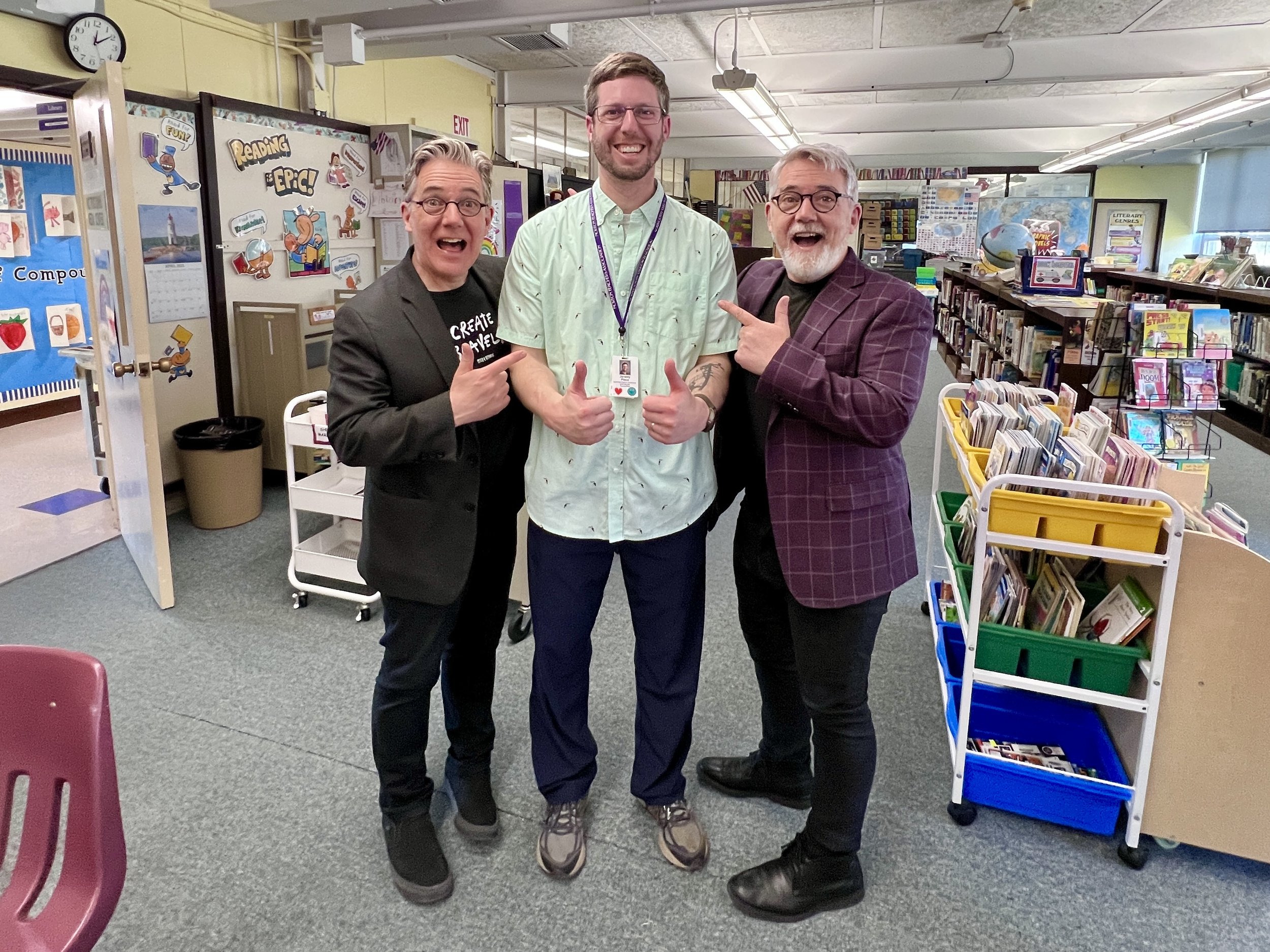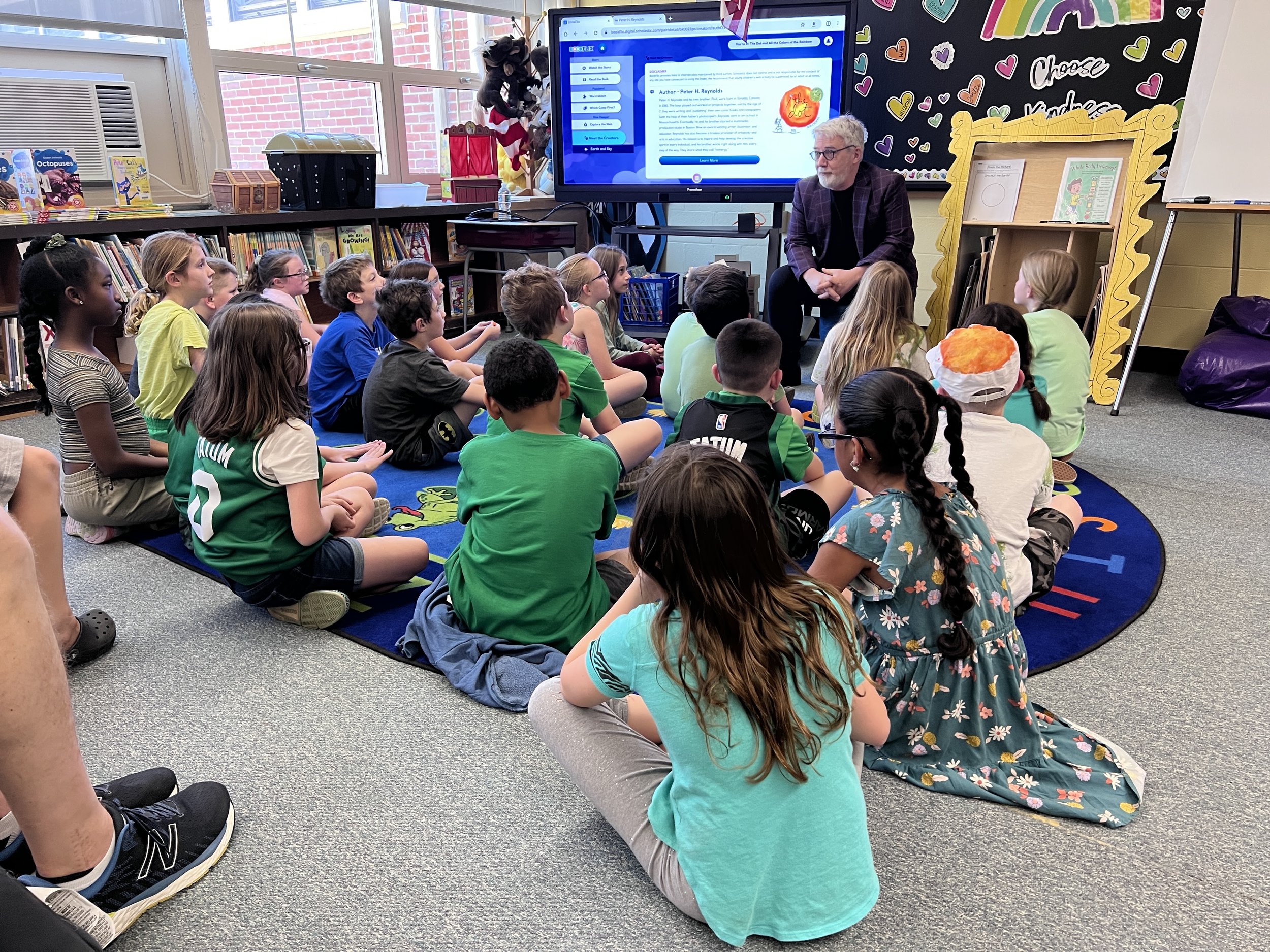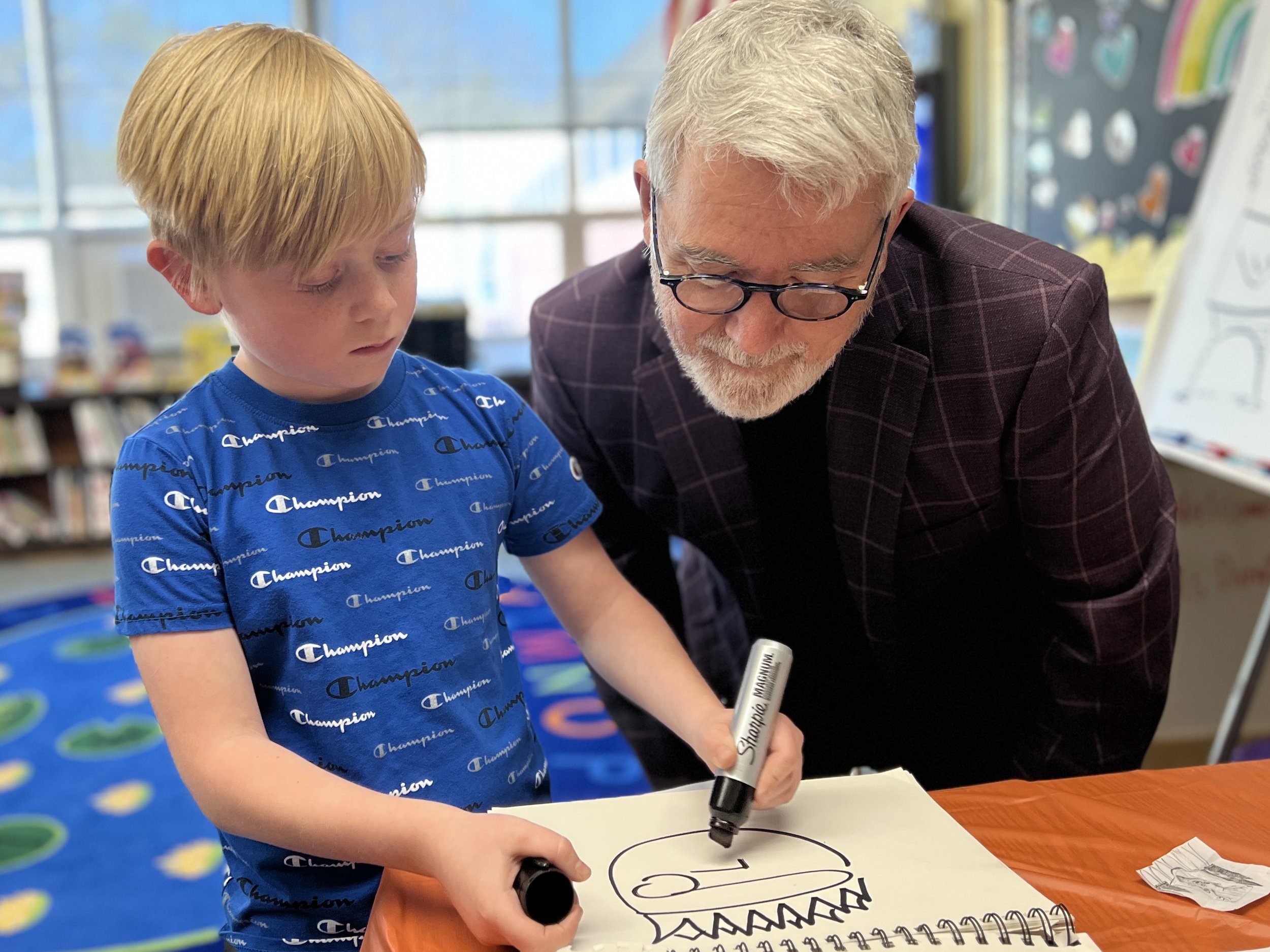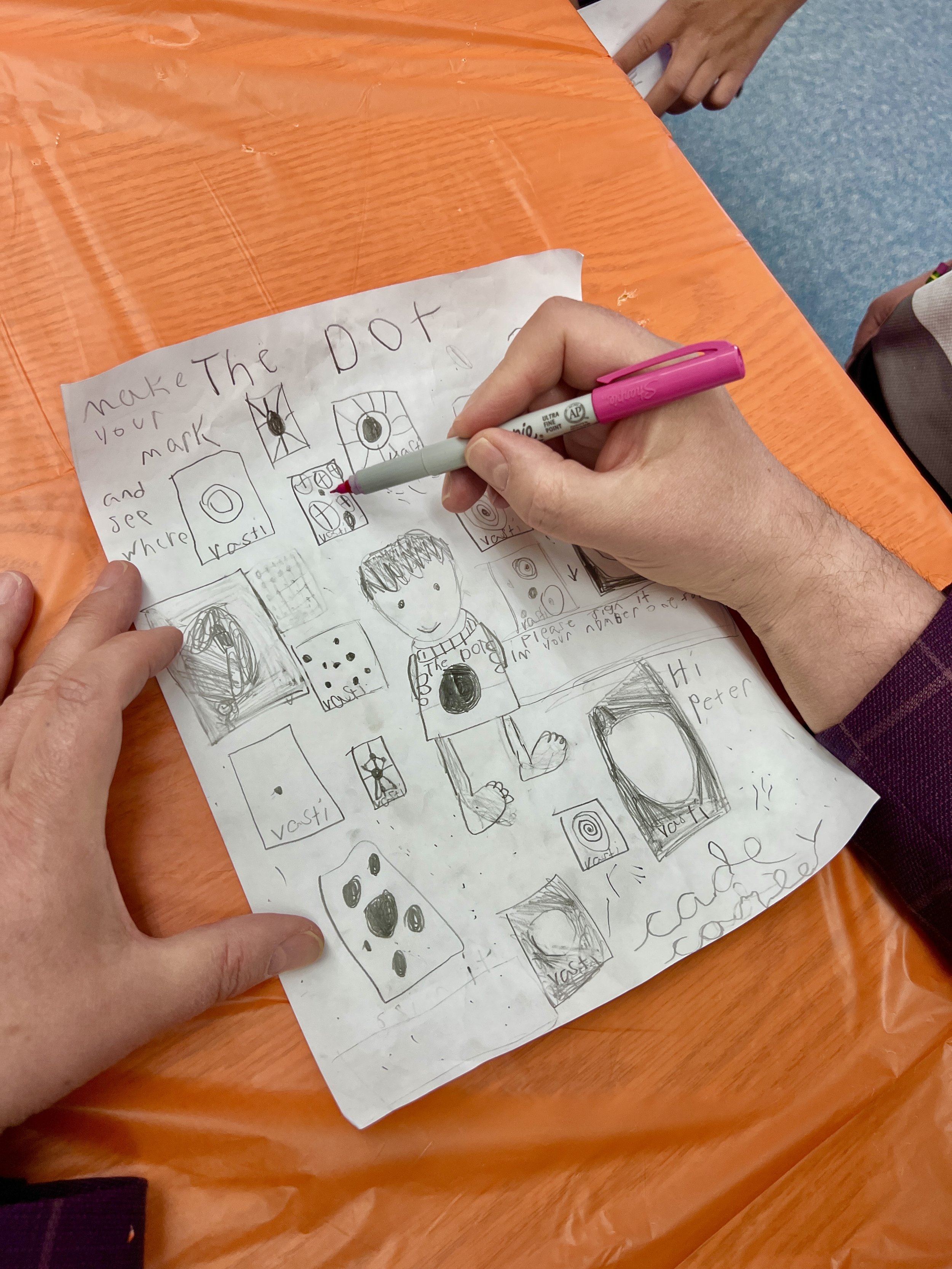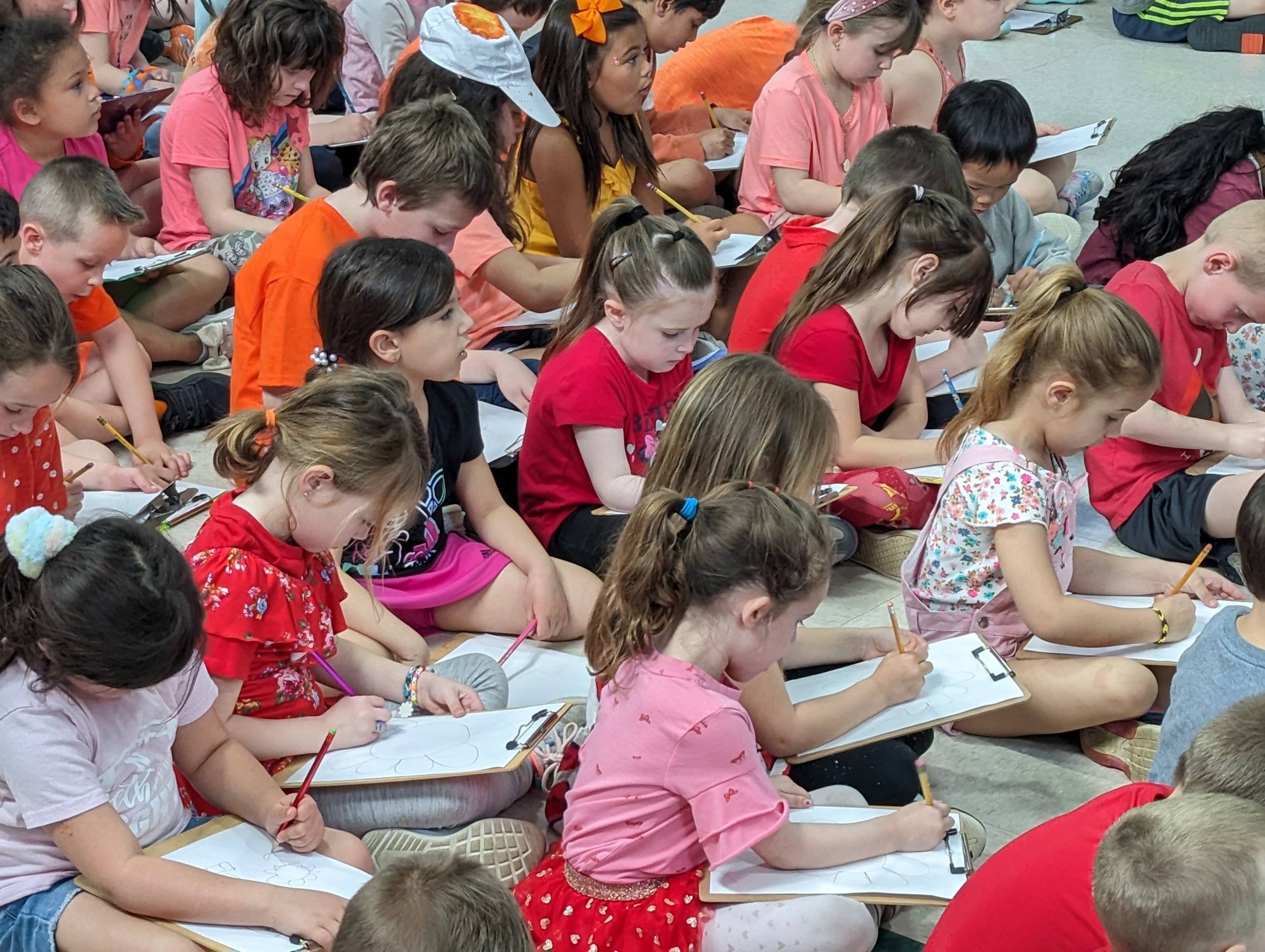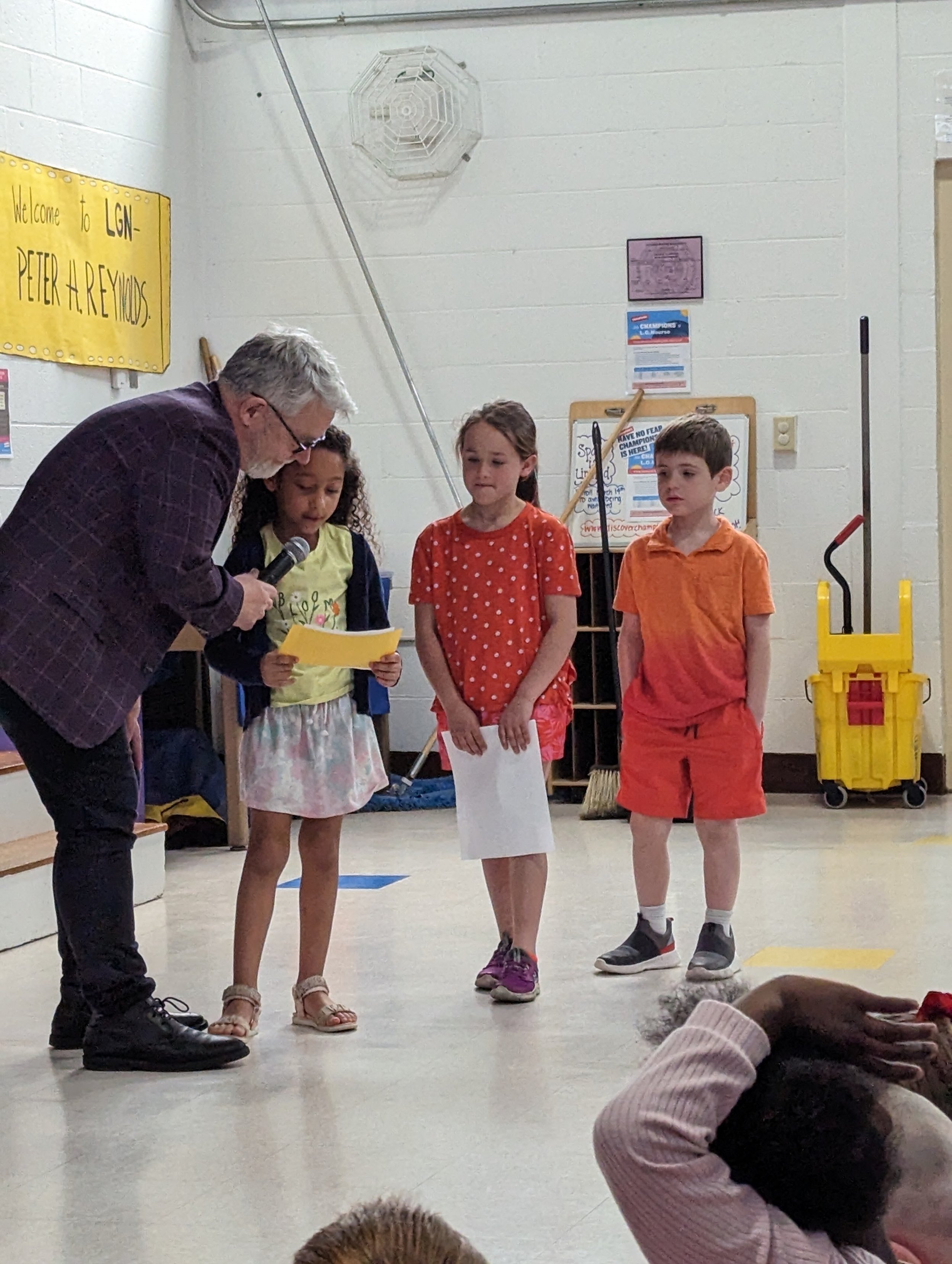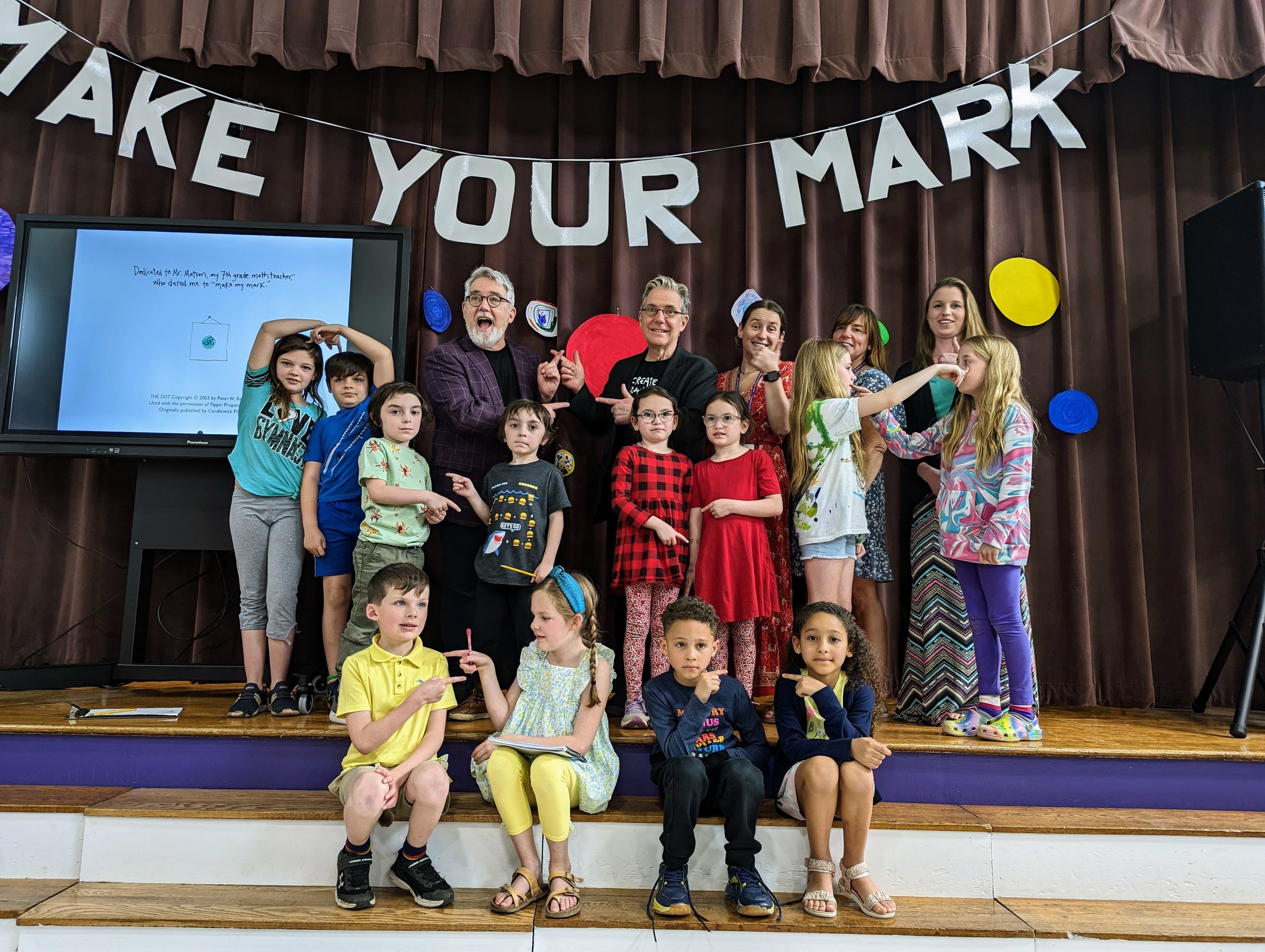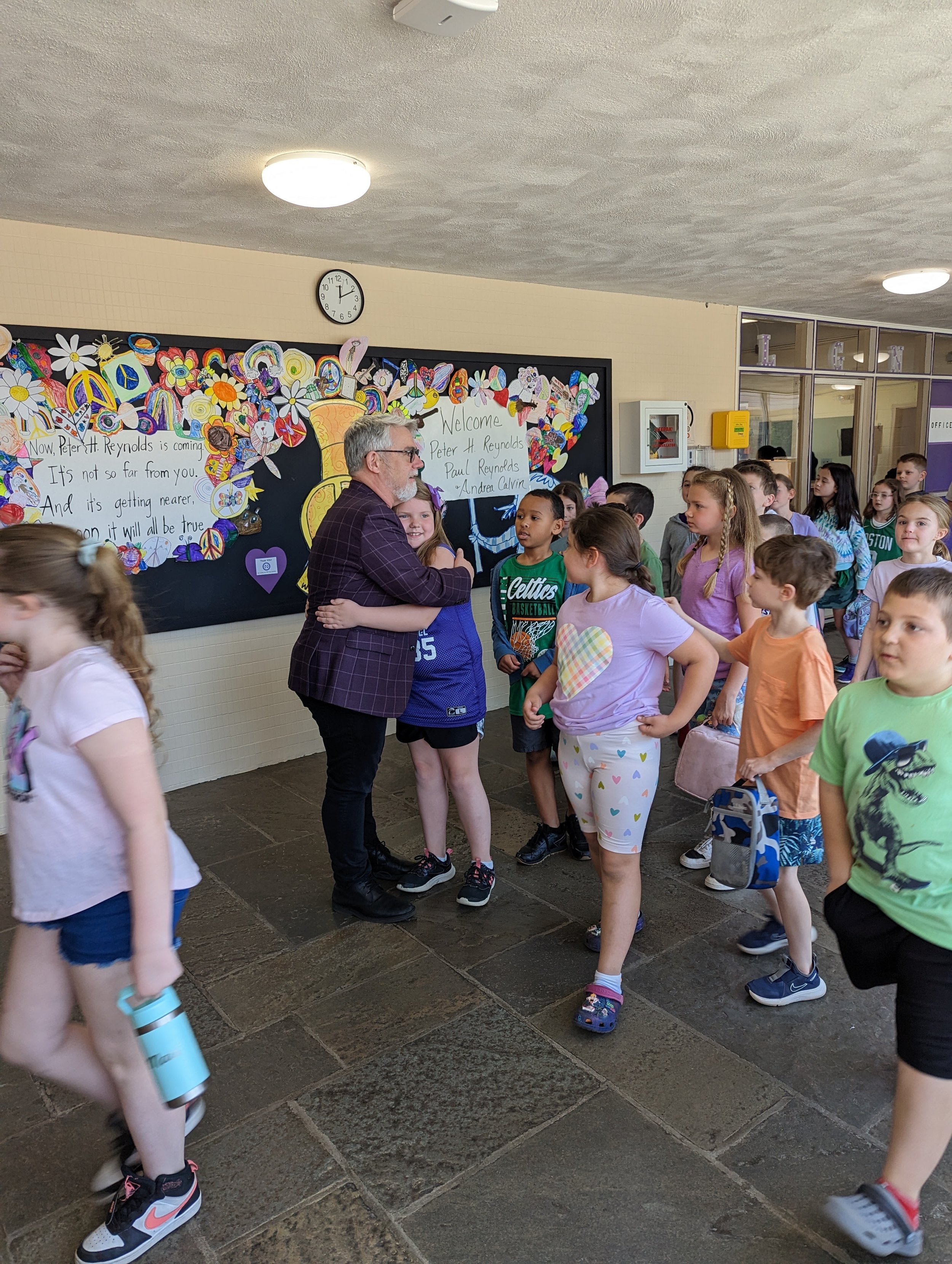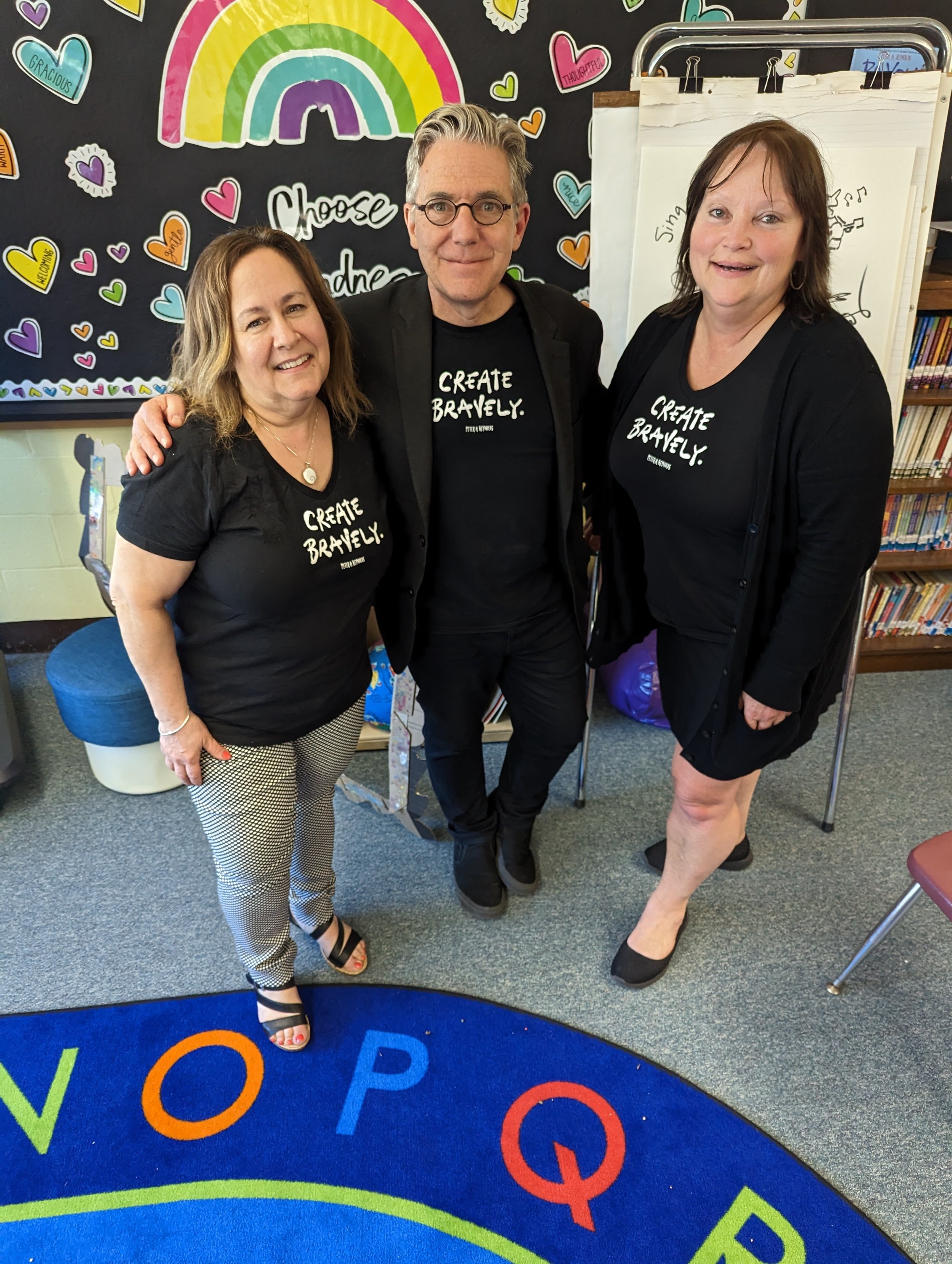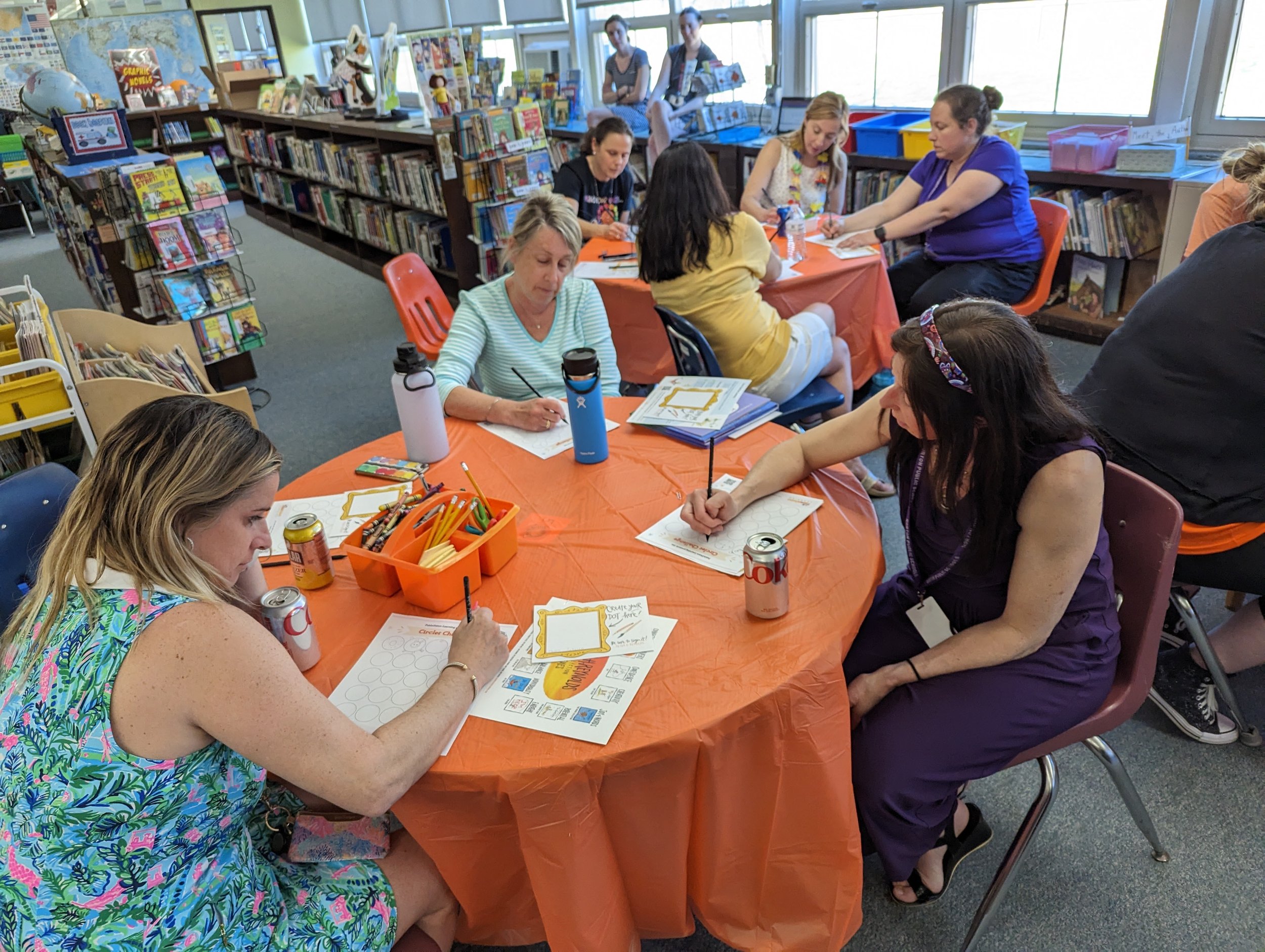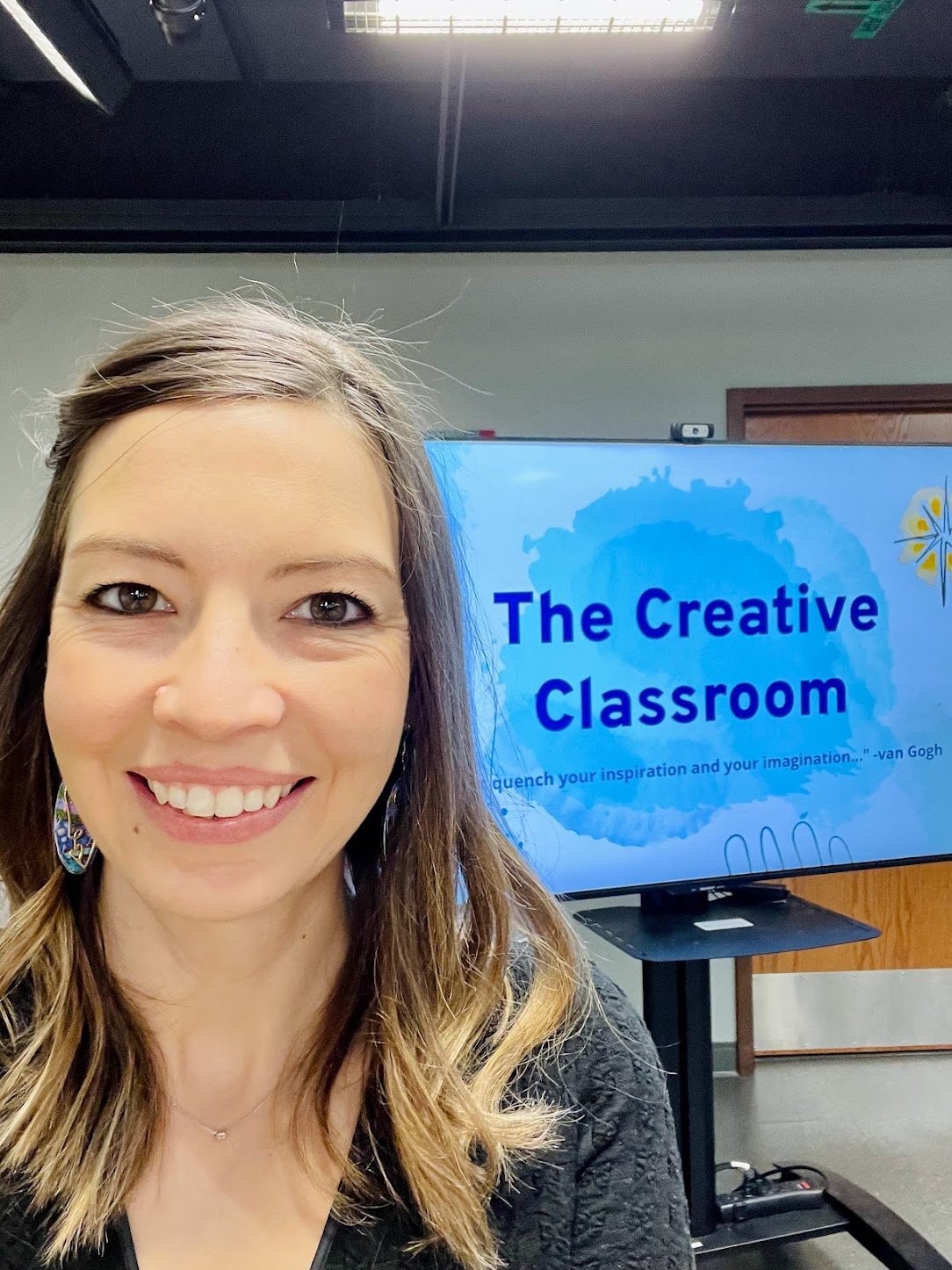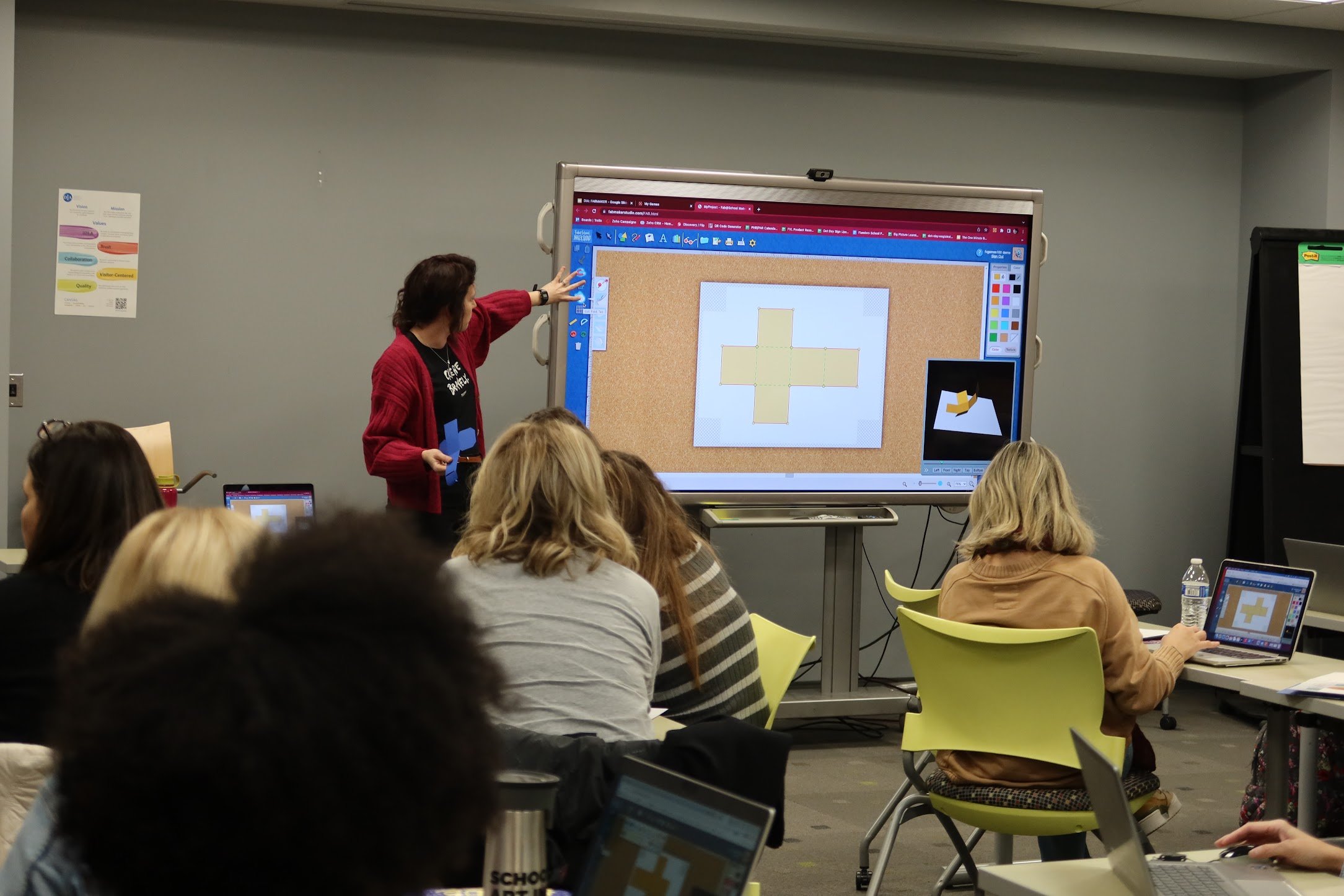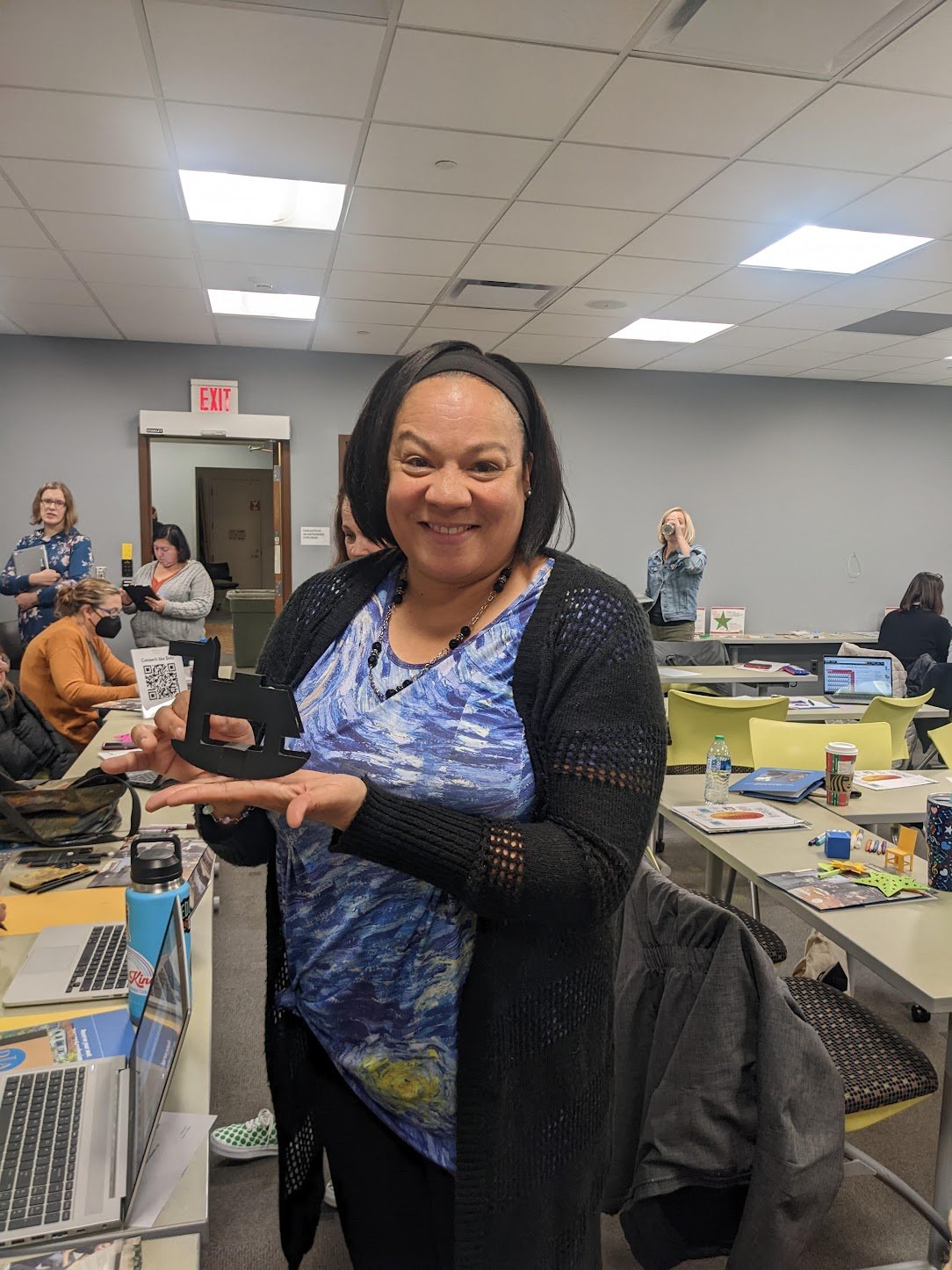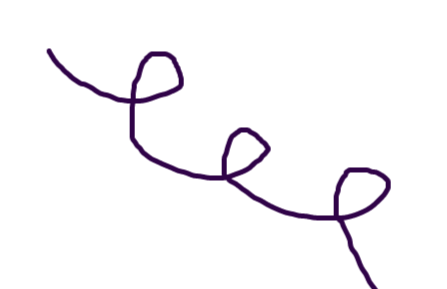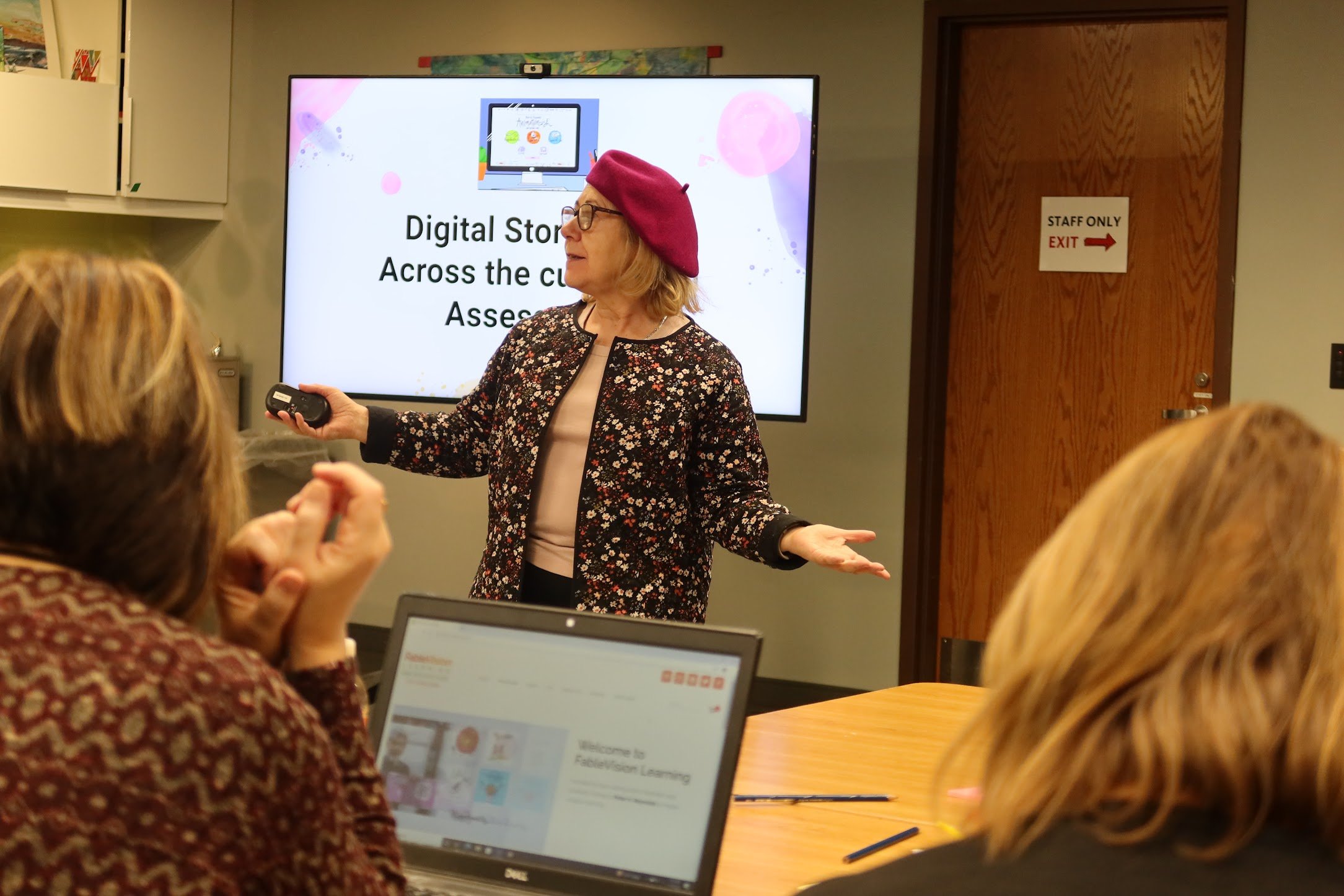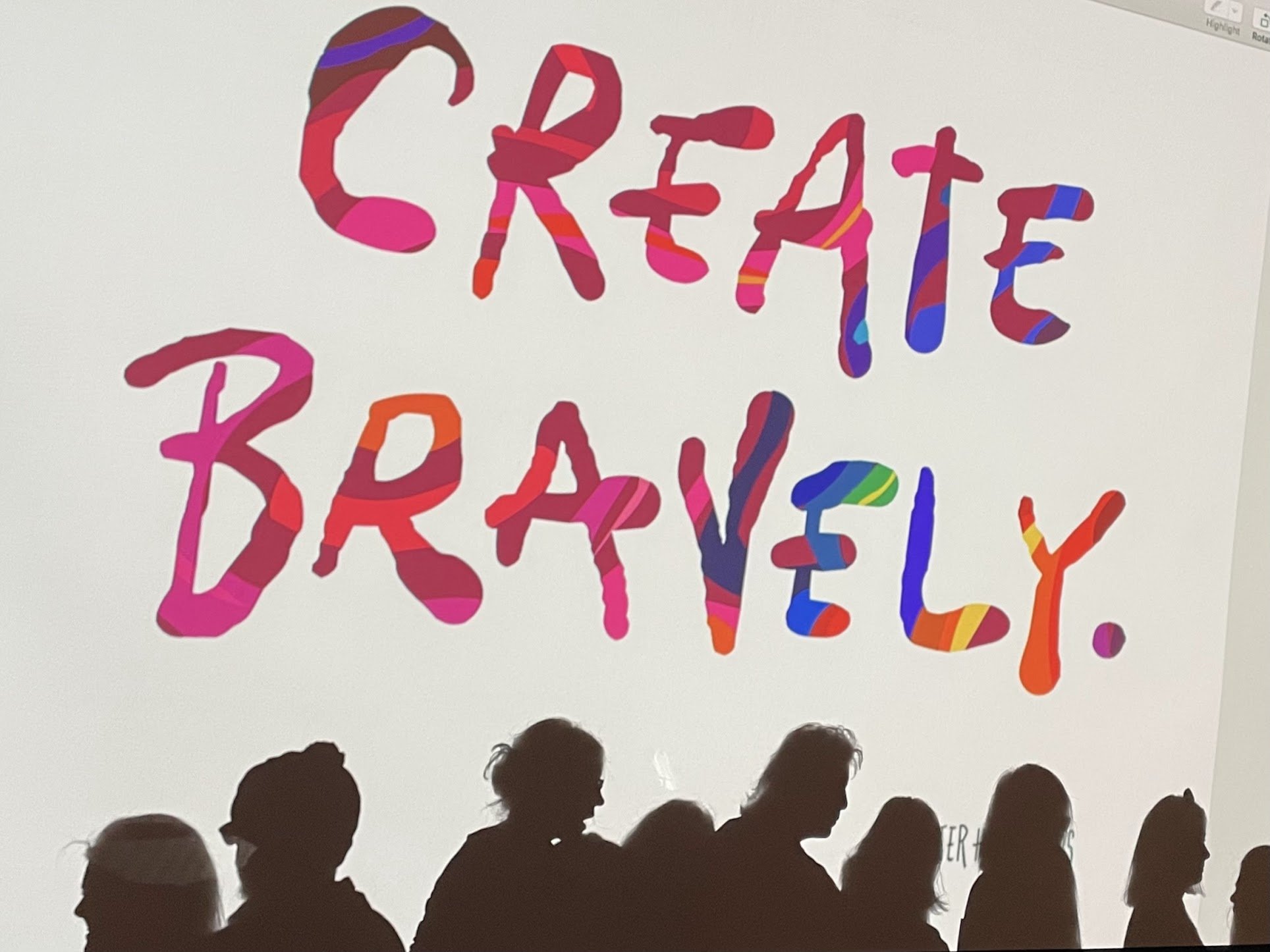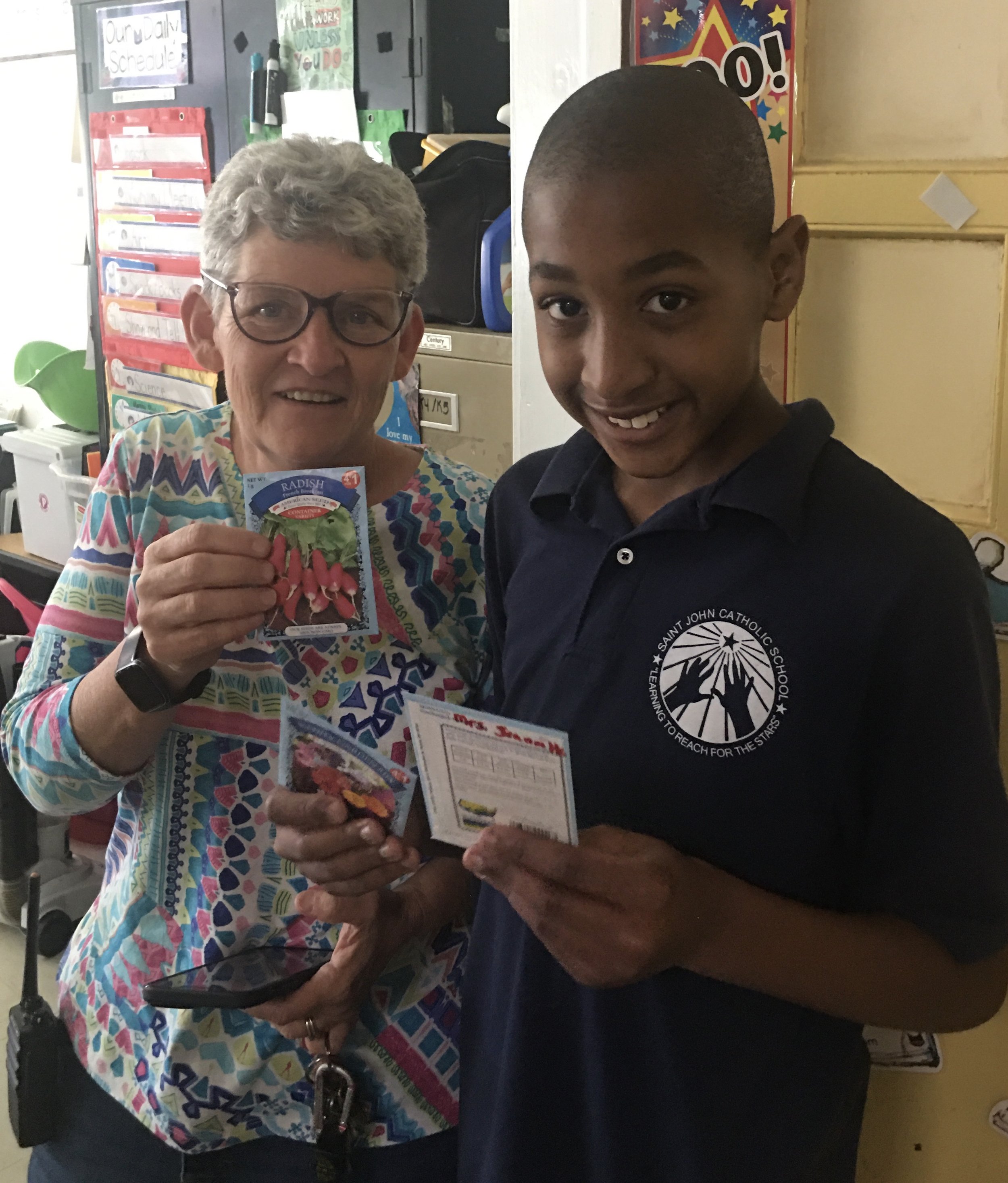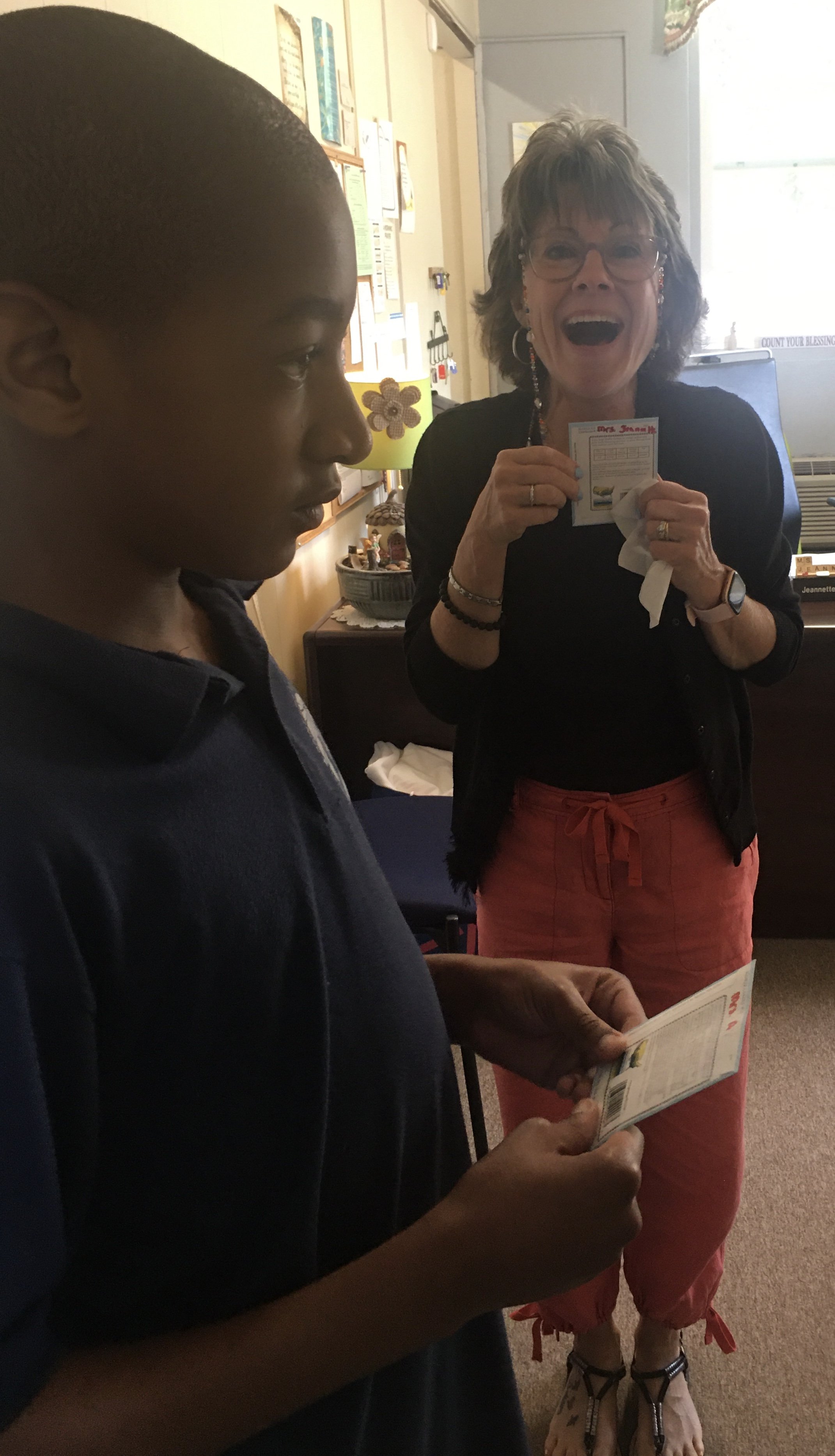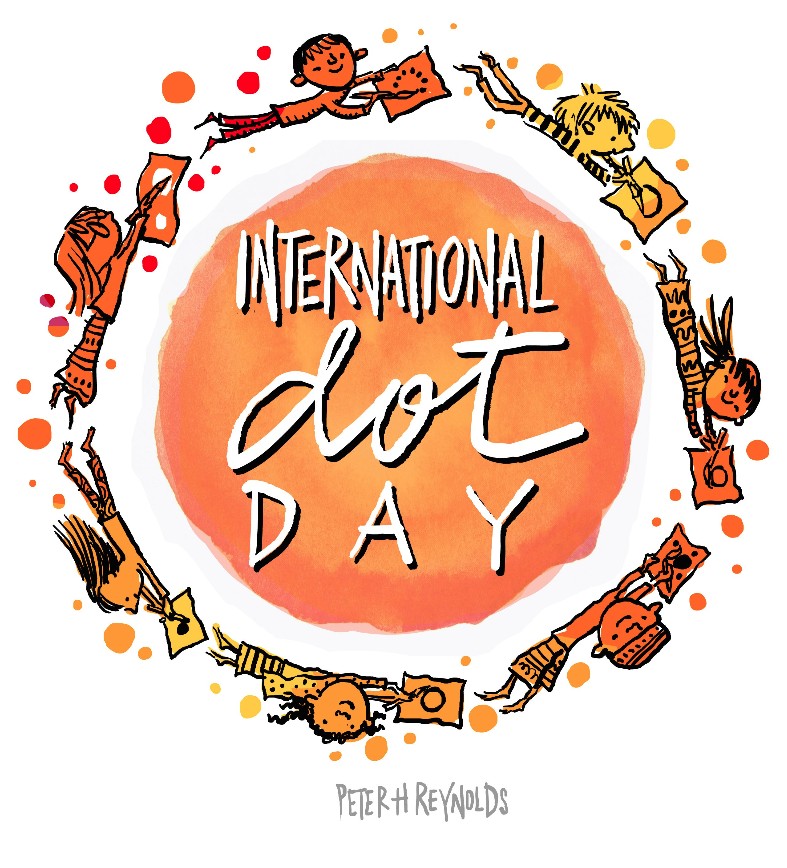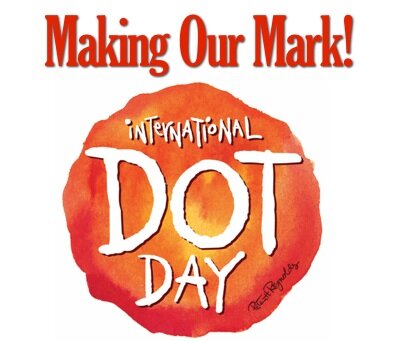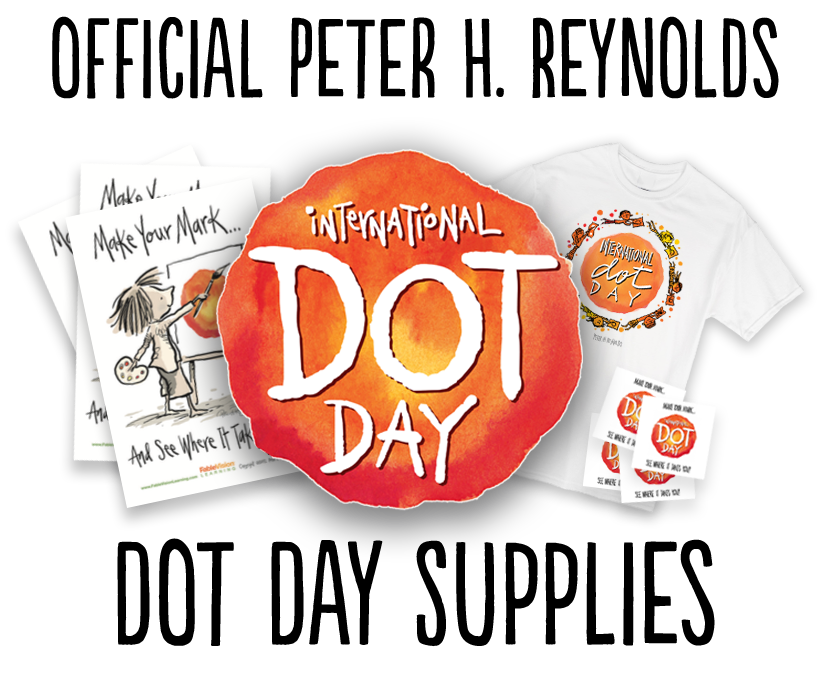FableVision Learning Spotlight Blog
Categories
- Animation-ish 42
- Books 21
- Civics! 2
- Classroom Spotlight 17
- Conferences and Events 20
- Creative Educator 3
- Creativity 25
- Distance Learning 13
- Dot Day 22
- FabClassroom 28
- FabFriday 19
- FabMaker Studio 66
- FabMaker Studio Classroom 13
- FableFive 7
- FableVision Games 3
- Free Educator Resources 36
- HUTCH 1
- Home Activities 5
- In the Classroom 34
- In the News 11
- International Dot Day 23
- Ish 1
- Library 1
- Mapping the World by Heart 7
- Paul Reynolds 10
- Peter H. Reynolds 54
- Professional Development 9
- STEM/STEAM 20
- Storybook Academy 2
- Teacher Spotlight 14
- The Dot 17
- The North Star 2
- Words and Their Stories 1
- Zoombinis 3
Embedding Creativity in the Classroom
Is This YOUR Year of Creativity?
It is our hope that classrooms are places brimming with creativity - with new and interesting ideas that spark students' motivation, love of learning, and ability to uniquely express who they are and what they know.
While sometimes it seems like creativity and the work of school are separate matters, the truth is that students learn best, and more deeply when information is presented creatively. In fact, there is a researched based method for incorporating creative thinking skills into the classroom.
Being able to see things in different ways and from different perspectives, imagining possibilities, making connections between unexpected concepts, and breaking through the “usual” way to discover alternatives are all creative skills that strengthen students’ understanding and set them up for creating a better future.
The Torrance Incubation Model, developed by psychologist E. Paul Torrance, incorporates these creativity skills into any lesson in any subject to enliven lessons and develop creative thinking in students (and teachers!). We have begun using this model to help teachers ignite creativity in their classrooms and make meaningful lessons that lead to deep learning.
In this model, a teacher weaves a creative skill into three parts of a lesson. The first part is heightening anticipation to get the students curious and excited. Perhaps in introducing the skill “Look at it Another Way” the students are presented with this image. What is it? How does it make you feel? Can you look at it another way and see something else? This creativity skill is then incorporated into the content, for example, of learning the elements of a story.
We do this in the next part, deepening expectations, by working with the content in a more thorough way while still practicing the creativity skill. This is when we dig into what the elements of a story are and what purpose they serve. While we do this, we can look at the story another way, like through the perspective of the villain. From this perspective, do the story elements change? There is a lot to explore this way, and the teacher can guide the class through analysis.
Finally, we must give the students the opportunity to use what they know outside of the context of the lesson. This is called extending the learning. The teacher may give the students the opportunity to retell, rewrite, or continue their favorite story from the perspective of the villain, demonstrating their understanding of story elements and how they move a story along.
Once we’ve journeyed through these three levels of a lesson and incorporated a creative thinking skill, the students’ minds are primed for incubation, which means they’ll hold onto the information longer and will be more ready to use it in any context to which they can connect it. They’ll also be better able to envision new ways to use and express what they know. Can you imagine the possibilities?
We believe that everyone is creative and everyone has a spark inside them. Torrance’s model, along with the 18 creative skills he defines, brings learning to a whole new creative level. Teachers that want to learn more about fanning the spark in their students and making creativity part of their everyday lessons can join our cohort of teachers taking our Certified Creative Educator Course at www.thecreativitycircle.org.
Sara Smith is the Director of Creative Education at FableVision Learning. Sara is an experienced K-12 educator, creativity facilitator and curriculum designer. She is an amateur but enthusiastic ukulele player and improv actor. She earned her master's degree in creativity from SUNY College at Buffalo. Now she works with FableVision Learning to inspire creative thinking in teachers and students through professional development and joyful learning experiences. She lives in Charlotte, NC, where she can happily and unabashedly use the word y'all.
CITATIONS
The Torrance Incubation Model can be found detailed in Torrance, E. P., & Safter, H. T. (1990). The incubation model of teaching: Getting beyond the Aha! Buffalo: Bearly Limited.
3 Ways to Make Your Classroom More Creative and Why
Creativity is one of the most powerful actions our brains can carry out. Some people think that being creative is something extra, like the seasoning on a meal, but in truth it is the meal. Without creativity, it’s as though you’ve just got raw ingredients (like knowledge, ideas, and know-how); however, when you use creativity to combine those ingredients in a meaningful way, you’ll find that you’ve turned individual components into something substantial, useful, and unique.
That’s why in Bloom’s Taxonomy, “creating” is at the top!
Creating something new and useful is the work of progress. Both the Partnership for 21st Century Skills and the World Economic Forum’s Future of Jobs report list creativity as a vital skill that’s only growing in importance. Both also include complex problem-solving in their lists, which requires creative thinking because known solutions don’t exist for complex problems.
You know we love drawing and painting, but we also know that creativity is much more than that. Creativity is where new inventions, medical breakthroughs, musical masterpieces, scientific discoveries, great novels, philosophical theories, and so much more are born. For students, the creativity that leads to those amazing things starts as practice in solving everyday problems with a creative mindset, in trying again and a little differently when something doesn’t work, in thinking up lots of ideas before choosing the one to go with, in dreaming up outlandish possibilities, in taking time to wonder about the things around them, in coming up with unusual ways to put things together, in being brave enough to test out their thinking.
We are here to help teachers understand and value these creative skills so they can provide students the opportunity to practice them and become confident creators. Many of these students will go on to change history, but equally important are those who learn to create meaning in their lives and the lives of those around them through their creativity.
Here are three ways to make your classroom more creative today.
Respond in an open way. When a student provides a wrong answer, instead of saying, “No” or “Not quite” or even “Try again,” try staying open and saying something like, “Interesting, can you explain your thinking?” or “Walk us through how you got there.” Mistakes can be the most valuable learning tools, but not if the response to them shuts down further thinking. Also try these same phrases for correct answers! Just saying “Yes!” to a correct answer puts an end to the thought process as well.
Surprise your students. The science of surprise is fascinating and tells us that surprising moments pique curiosity and create the desire to share with others. Not to mention that playfulness is a creative skill. Students will remember and talk about novel moments in class. So, wear a crown when teaching about monarchies, have the students work UNDER their desks for a while, play rainforest sounds over speakers when studying the rainforest, or have a puppet give a mini-lesson. The limit is only in your imagination.
Provide opportunities for divergent (possibility) thinking. This means giving the students time to think of a lot of ideas around something they are working on. Perhaps have them write 5 different ways to open a story or other piece of writing before they choose which one to use, or see if they can come up with 5 different ways to solve the same math question, or give them the answer to a question (igneous rock!) and have THEM come up with possible questions for which that is the answer.
Good luck!
Sara Smith is the Director of Creative Education at FableVision Learning. Sara is an experienced K-12 educator, creativity facilitator and curriculum designer. She is an amateur but enthusiastic ukulele player and improv actor. She earned her master's degree in creativity from SUNY College at Buffalo. Now she works with FableVision Learning to inspire creative thinking in teachers and students through professional development and joyful learning experiences. She lives in Charlotte, NC, where she can happily and unabashedly use the word y'all.
CITATIONS:
3 Ways Creativity Principles Can Fuel Self-Acceptance
By Sara Smith, Director of Creative Education at FableVision Learning
As educators and caregivers, we want to help children develop a strong sense of self. We know fostering a healthy self-image is vital for a child's overall well-being. Fortunately, the science of creativity offers us three valuable principles that not only promote creative thinking but also help build confidence, resilience, and self-worth.
1. Embracing Divergent Thinking: Quieting the Inner Critic
At the heart of creativity lies divergent thinking – the ability to generate many, varied ideas. Part of divergent thinking is deferring judgment, or waiting to evaluate our ideas until we have fully explored the possibilities and allowed ourselves to freely express our imagination without fear of criticism or limitation.
Teaching children how to defer judgment means encouraging them to quiet that inner voice that tells them their ideas aren't good enough. It means not being dismissive when they express ideas that may be silly or impossible. It looks like asking for their thoughts and ideas and being willing to try out new ways of doing things based on their contributions. It sounds like responding to them with genuine curiosity and interest. Modeling openness and acceptance is the best way to instill it in our young ones.
Not only does this principle create a climate of openness and acceptance, but it can also teach children to love and accept themselves. As students learn to silence their inner critic and embrace their originality, they begin to cultivate an appreciation for their own ideas and capabilities. As they remain open to the beauty of new ideas when ideating, they learn to be open to the beauty of who they are and the uniqueness they bring to the world.
2. Affirmative Judgment: Focusing on the Positives
In the creative process, we do need to eventually evaluate and converge on our ideas. Here, affirmative judgment plays a crucial role. When we engage in affirmative judgment, we focus on what’s right, what’s good, and what’s positive about ideas rather than immediately jumping to all that is wrong or impossible. This keeps us focused on how to move forward rather than feeling defeated.
Encouraging children to look at their ideas and their work with an affirmative perspective builds their self-worth and self-acceptance. When students become practiced in seeking out the positives, they are more able to see their own strengths and best qualities.
Children hear the way we talk about ideas, about others, and about ourselves. To stock their self-management toolbox, they need to witness affirmative judgment from us. They need to hear us tell others what we appreciate about them; they need to hear us talk about what we care about and then watch us seek it out; they need to hear us express our own strengths with pride. They also need to hear us say good things about them, because the way we talk about them becomes their self-talk, and positive self-talk is one of the most powerful tools for improving our self-image.
3. Embracing the Iterative Process: Reframing Mistakes
Creativity is a journey that can be messy and full of obstacles and setbacks. Fumbles and failures inevitably require us to go back and try again a little differently, over and over. Accepting that as part of the process allows us to be resilient when we run into issues or things don’t go as we hoped or expected.
Our lives are also creative projects. When we can view ourselves from a creative perspective, we see that, of course, mistakes and missteps are going to be part of the process of being a person. Knowing this gives us permission to forgive ourselves, recognize our potential, and pick back up and continue trying.
Apply this principle by reminding the children in your life of the times they were resilient and persevered. Tell them about times you made mistakes and learned from them. Reassure them that they are wonderful and loved, even when they’ve messed up.
Creativity serves as a powerful tool in nurturing self-acceptance in children, providing them with the skills and mindset needed to navigate the hard parts of being human. By fostering a culture of creativity that celebrates uniqueness and expects iteration, we empower children to appreciate their imperfections, embrace their strengths, and to see themselves as the valuable humans they are.
Did you know that FableVision Learning offers an online Creative Educator Certification Program? At the end of this year-long certification program you will be prepared to teach creatively, nurture the creative spirit of your students, and practice the tools and skills of creativity in the classroom.
Sara Smith is the Director of Creative Education at FableVision Learning. Sara is an experienced K-12 educator, creativity facilitator and curriculum designer. She is an amateur but enthusiastic ukulele player and improv actor. She earned her master's degree in creativity from SUNY College at Buffalo. Now she works with FableVision Learning to inspire creative thinking in teachers and students through professional development and joyful learning experiences. She lives in Charlotte, NC, where she can happily and unabashedly use the word y'all.
Peter H. Reynolds Inspires Young Writers at Nourse Elementary School
Julie Durmis, the Library Media Specialist at L.G. Nourse Elementary School might be Peter H. Reynolds’s number one fan. Having connected the dots with FableVision Learning in the spring of 2020, she had one goal - to bring the joy of Peter to the students in Norton, Ma. This school year her dream was realized.
Third-grade students explored storybook writing and character development through The Peter H. Reynolds Storybook Academy. As a special treat, FableVision Learning’s Andrea Calvin, a former newspaper journalist, hosted a One Minute Book workshop with the students. This set the stage for the special guests - Paul and Peter H. Reynolds.
On a sunny April morning, the Nourse School welcomed Peter H. and Paul Reynolds in song … The Dot Song, by Emily Arrow. The day was filled with stories, drawings, and laughter. Paul and Peter had a special lunch with bookmark contest winners and ended their visit by meeting with each third grade class.
Rounding out the day, Andrea Calvin hosted Nourse educators for a Creativity PD with tips on how to use Divergent Thinking in the elementary classroom.
If you are interested in learning more about custom programs, family nights, and author visits email the team at info@fablevisionlearning.com
Peter H. Reynolds and FableVision Learning Create Bravely at the Detroit Institute of Arts
Our third collaboration with the Detroit Institute of Arts (DIA) brought excitement and laughter as we were in person celebrating the world of Van Gogh. Peter H. Reynolds and FableVision Learning teams’ time at the DIA in November included a visit with students followed by a PD day with teachers, as we connected the dots between digital storytelling, creativity and STEM.
Kicking off the event, eager Detroit-area students filtered into the DIA’s gorgeous, vintage theatre to spend an hour with Peter H. Reynolds. The room was filled with delight as Peter shared one of his most recent books, Our Table. Then, the students surprised him with a book they had created, inspired by his art and stories!
Peter drew his favorite characters on large easel paper and passed them out to each class, and then the students got a turn with the microphone to ask questions. To everyone’s surprise, the question-and-answer time turned into a joyful singalong! Peter’s message to the students and teachers was encouragement to be brave, create, and never stop. The unanticipated message from the students ended up being just as important: a reminder that collaboration and creativity are always there, waiting to be uncovered, and that amazing things can happen when we are together.
The following day, despite the cold and snow, over 70 teachers came to participate in workshops aimed at creativity and digital storytelling, with the backdrop of the DIA’s new Van Gogh exhibition providing lots of inspiration along the way!
In the Animation-ish workshop, teachers were inspired to use animation as a new and motivating way for students to express themselves and show what they know. Teachers got to dive right in and create their own animations and experiment with ways to bring stories and concepts to life in the classroom.
The Creative Classroom workshop challenged teachers to think about creativity outside of the realm of art. They engaged a creative mindset, practiced creative skills, and learned creative tools to bring out the best in their students. The group collaboratively brainstormed ways to use the “5 magic words of possibility thinking” to foster divergent thinking in the classroom, no matter the subject, and they also played games and drew some silly pictures along the way!
Fortified with paper, glue, and digital fabricators, teachers joined the FabMaker Studio workshop to create a magical 3D world of art and engineering. Using the online, STEM tool, they designed 3D objects inspired by Van Gogh’s work and discovered the brain benefits of seeing objects with an engineer’s eye. Teachers left with tons of ideas for bringing hands-on creation into the classroom.
It was a great day, but don’t take our word for it! Here are some comments from participating teachers:
“What a very enjoyable and creative day we had together. Thank you for sharing your new inspirations and ideas for our classrooms and even our personal growth.”
“Thanks so much for the inspiration yesterday! I had so much fun.”
“I liked that the workshop introduced many new ideas but we also had time to talk to others, relax and create.”
“It was the most fun and useful PD that I have ever attended!”
Interested in bringing a dash of creative PD to your school district or program?
Contact the team at info@fablevisionlearning.com.
About DIA
The Detroit Institute of Arts (DIA), one of the top 6 museums in the USA, has an absolutely amazing collection of works and currently has a magnificent Van Gogh exhibit on until January 23, 2023. They also have a fantastic educational program providing professional development for teachers and trips for students.
South Carolina Teacher Takes Classroom to Next Level With FableVision’s Creative Educator Certification Course
The following blog post was written by Tyler Stott, an intern at FableVision Learning.
Molly Myer, a teacher at Saint John Catholic School, in South Carolina, has taken her teaching to the next level with FableVision Learning’s Creative Educator Certification Course. Myers shared that this course is helping her learn more about creative learning as has also been using Animation-ish and FabMaker Studio.
“The Certified Educator Course has been a lot of fun to work on. It is helping me to think more outside of the box. It ties in beautifully with my students’ Passion Projects which they are starting to work on. The student creativity guidebooks provided are an excellent tool to help my students come up with their Passion Projects topics. I love the self reflection that they are doing in these guidebooks,” Myer said.
Not only has the course provided her classroom with a lot of fun STEM activities, Myer says that it has changed her approach to teaching.
“The course offers such a great opportunity to go through it at my own pace and come back to materials. It is helping me to be more reflective as a teacher and to take my time, “she explained and added, “It has helped me to come up with ideas on how to best help and motivate a child who might be hesitant about trying.”
Students of Myer create their own original ideas and projects on applications such as FabMaker Studio and Animation-Ish, which are provided by FableVision Learning. Myer has loved watching every moment of it.
“The students love (the programs). It is so neat to see even the most hesitant student comfortably navigate this amazing tool. The creativity I have gotten out of my students using these amazing tools has been life changing,” she shared.
Check out the photos from her classroom.
Be You After-School Program at Jaffrey-Rindge School District Explores Creativity and Making
The team at FableVision Learning just wrapped up a fantastic year working with the with Jaffrey-Rindge Cooperative School District after-school program.
We worked with the New Hampshire school district to implement an exciting after-school program for K - 8/9 students that supported personal and academic success through the use FableVision’s creative tools and engaging projects.
Using custom curriculum focused on social-emotional learning (SEL) along with tools like Animation-ish, FabMaker Studio and resources from the The Peter H. Reynolds Storybook Academy the students explored their creativity while sharing their voice. To wrap up the program, FableVision hosted a virtual. end-of-year celebration of student work with special guests Paul and Peter H. Reynolds.
Here are some highlights:
Engineering and Design with FabMaker Studio
From intricate pop-ups to 3D robot Batman, students explored design engineering and paper fabrication.
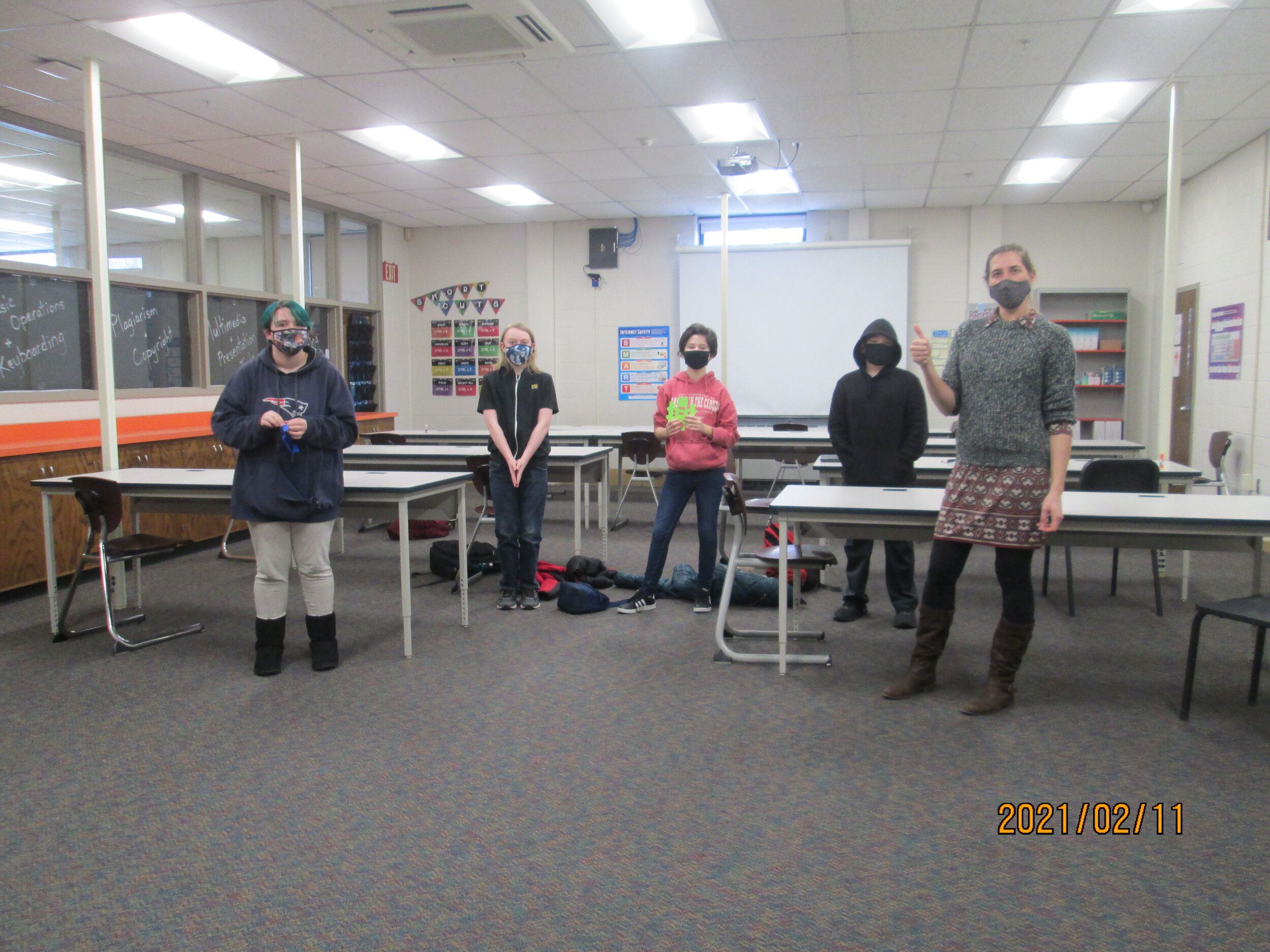
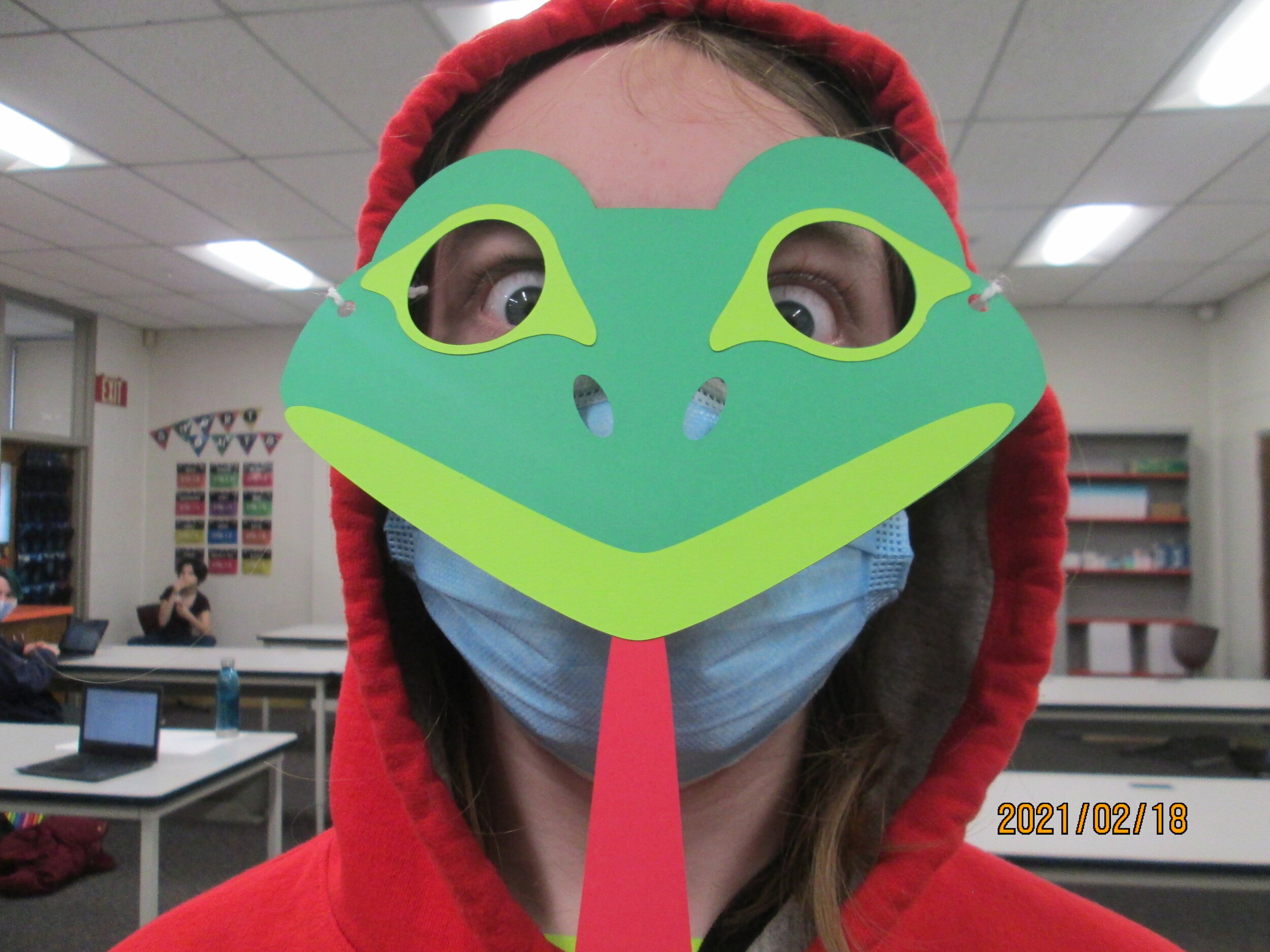
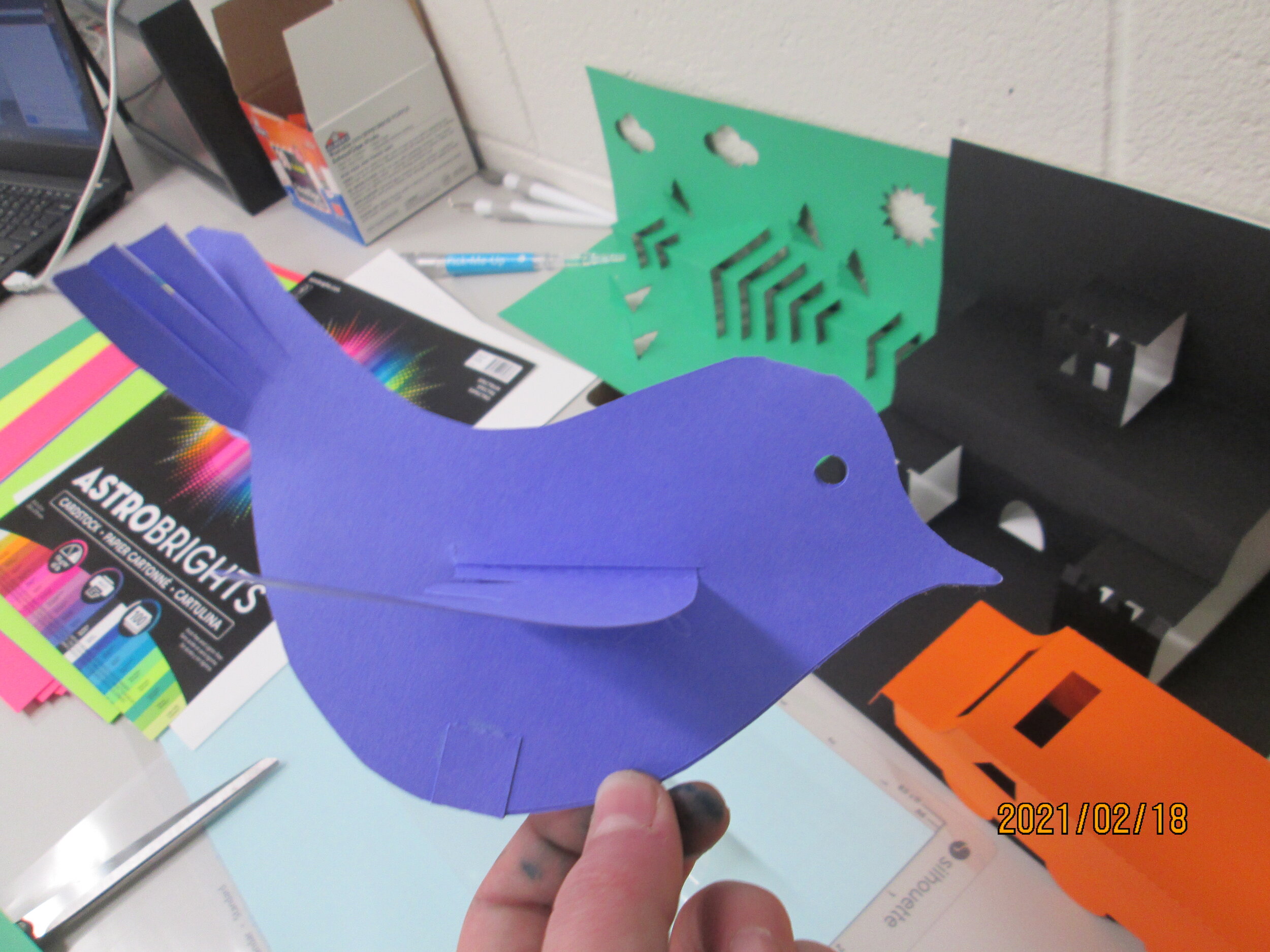
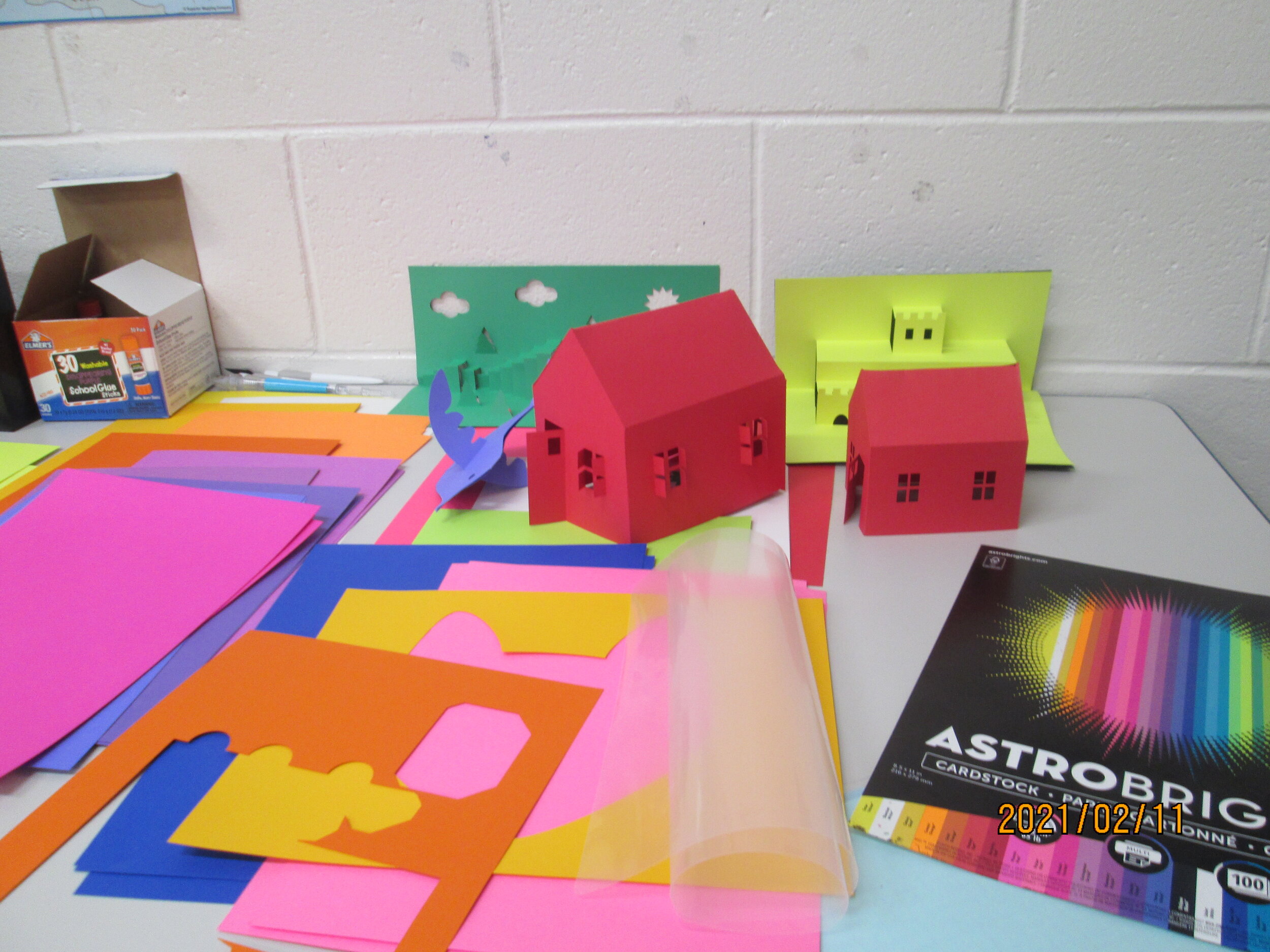

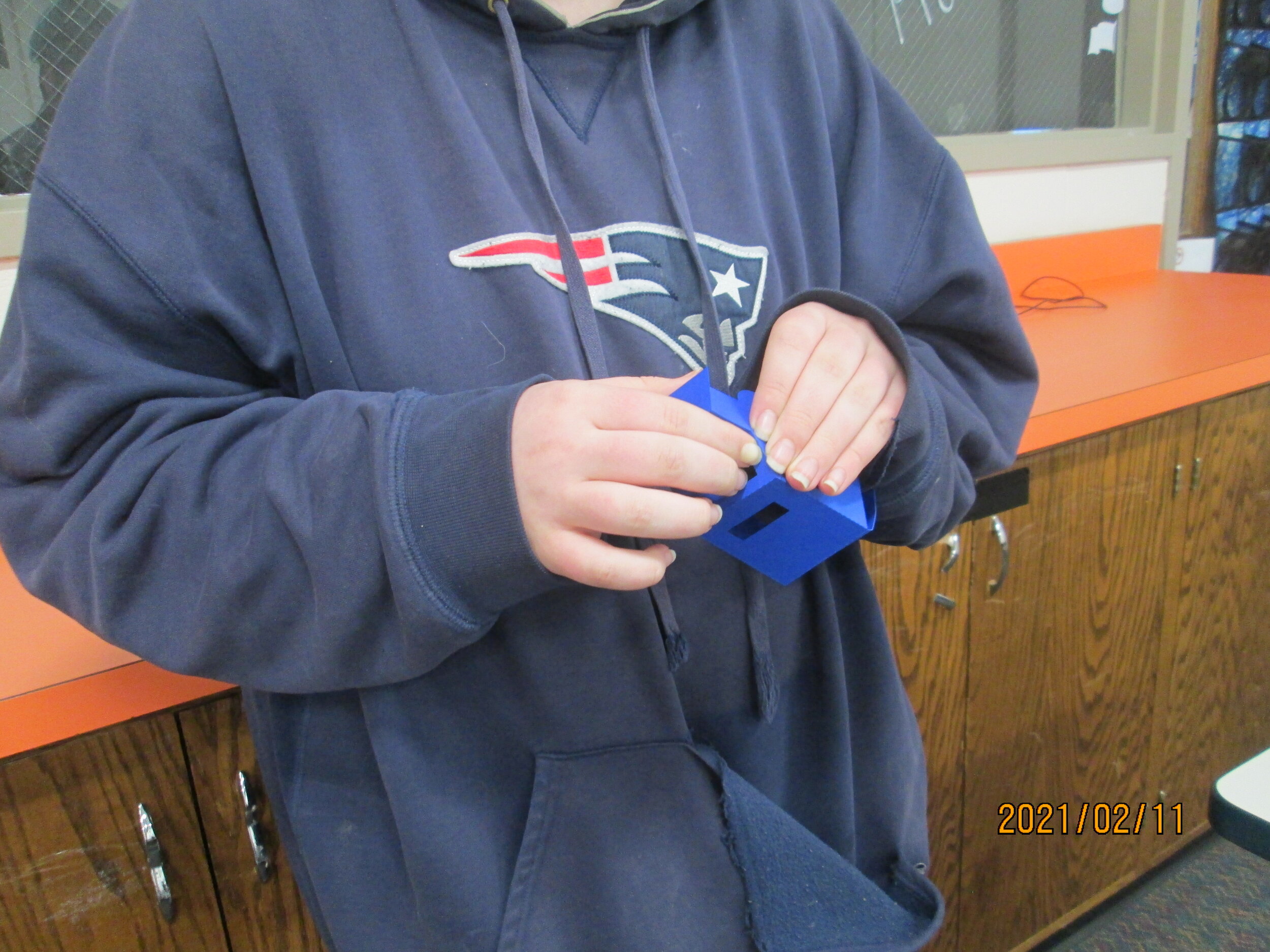
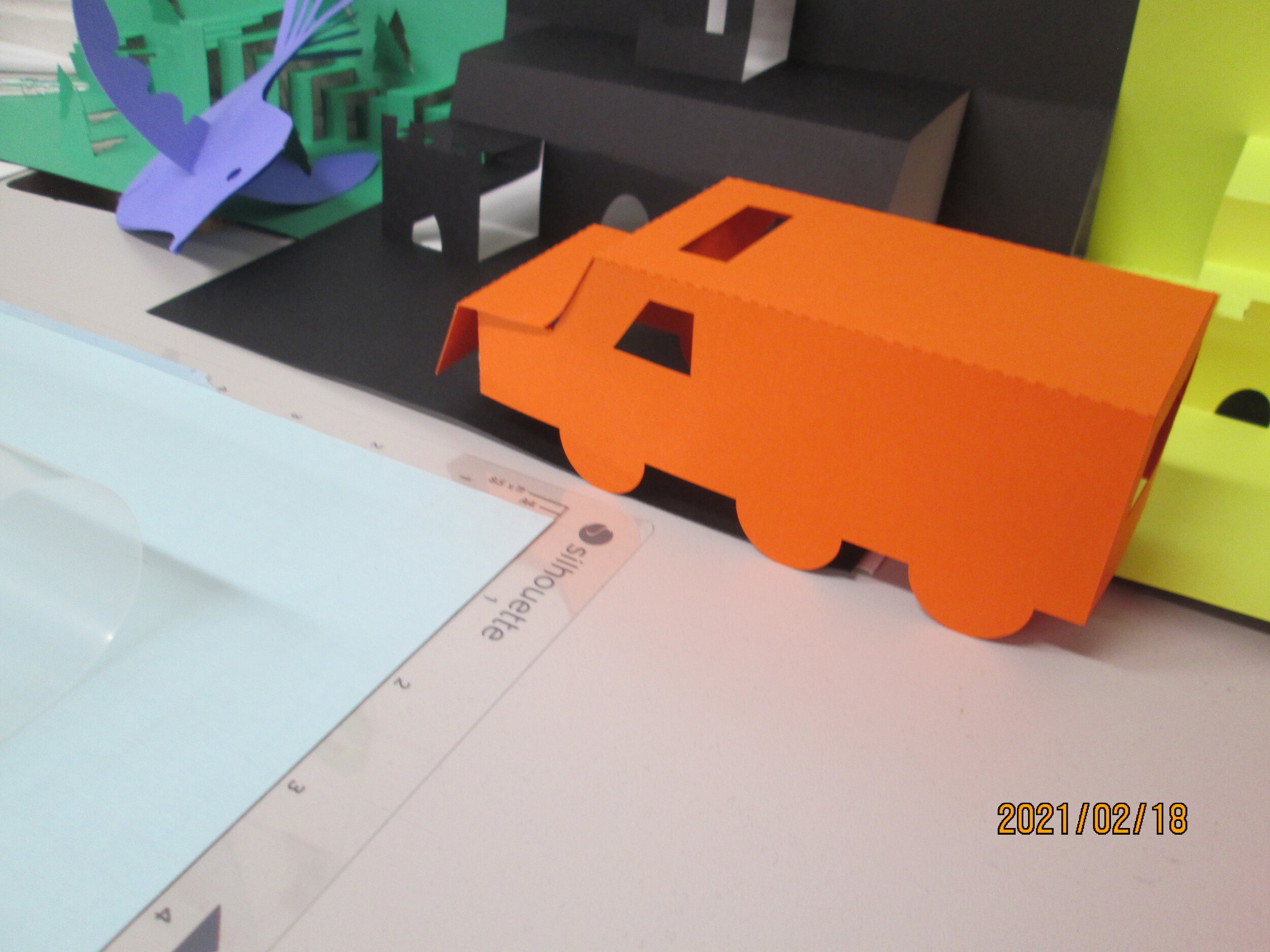
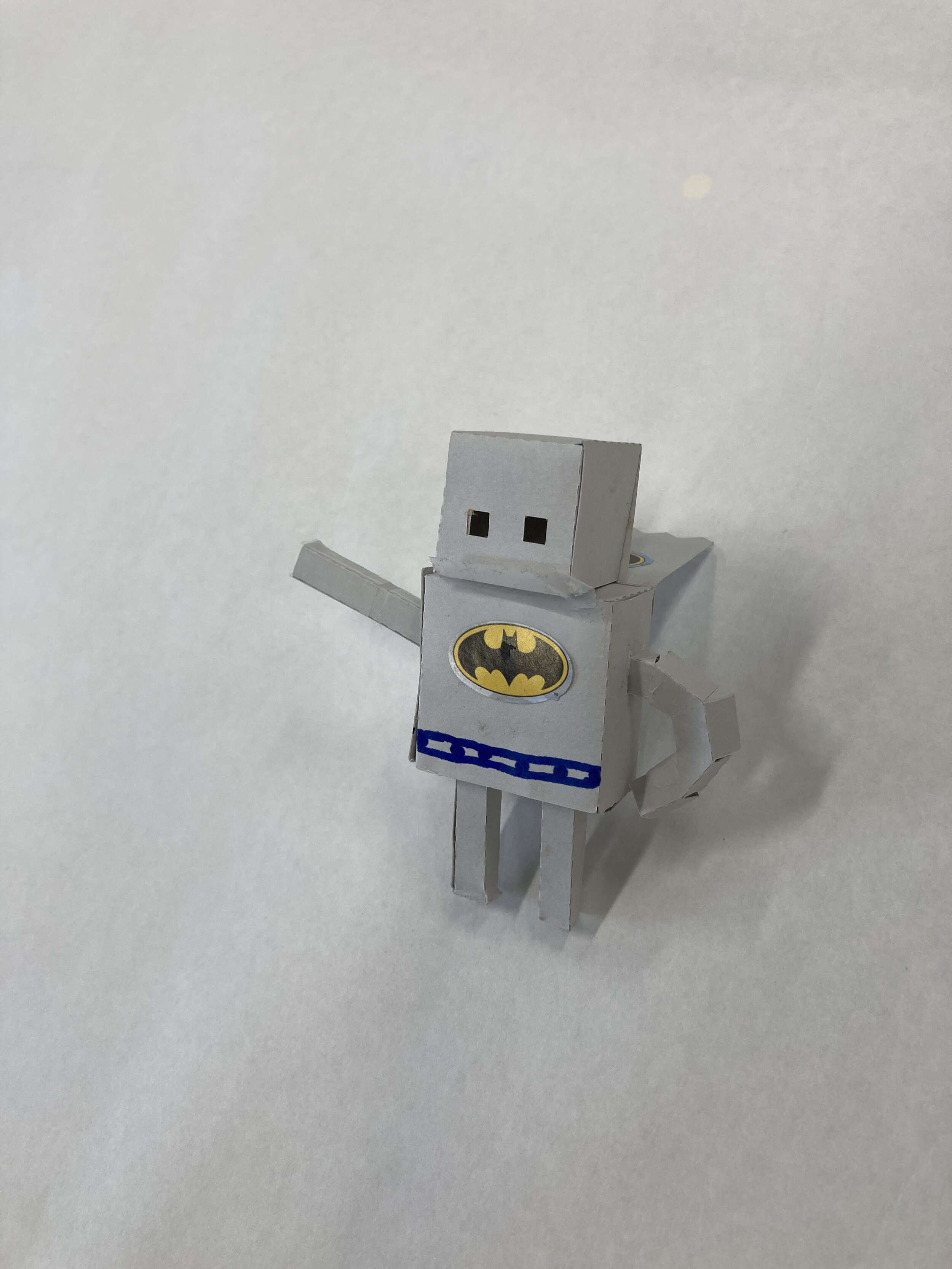
Animation-ish
Students learned the basics of animation and explored different levels of Animation-ish to create their final projects (seen above in gif form).
Are you looking to bring custom programs and curriculum to your school, after-school or camp classes? contact us at info@fablevisionlearning.com to find out more!
FableVision Learning Celebrates Student Creators in New York City’s District 75
FableVision Learning wrapped up another amazing year with New York City’s District 75 Middle School After School (MSAS) program. To make the program happen this year, the district had to navigate the challenges of a pandemic and remote learning, and FableVision Learning helped with a custom curriculum focusing on social-emotional learning (SEL).
After all the changes and uncertainty students experienced this year, it felt especially important to help students express themselves and tell their stories, because everyone has a story to tell.
During the FableVision program, students read books by Peter H. Reynolds to introduce each core competency of SEL. Then they shared their hearts through animations about their emotions, generated and practiced self-management strategies, and wrote their very own books about things that are important to them. No two student projects were the same.
As a culminating celebration, almost 200 teachers, parents, and students gathered virtually to celebrate all the students’ hard work and resilience during the Virtual Year End Annual Gala hosted by Peter H. Reynolds.
We are so grateful to have been part of this program to help D75 students share their voices and access their creativity in a difficult time.
STUDENT STORIES





ANIMATION-ISH PROJECTS
ANIMATION-ISH IN SPACE
Create Bravely this Valentine’s Day
This Valentine’s Day, share the love with those that mean the most - virtually of course! For a fun twist on a typical card, why not have your students use Animation-ish and FabMaker Studio, to create awesome Valentines!
With these two web-based tools, your students can make Valentine’s Day explosion boxes, practice math with pop-up cards, animations of what they love, and so much more.
Here’s a few activities from the classroom that you can try with your students.
Animation-ish
Find a unique way to share your love and creativity this holiday with FableVision Learning’s Animation-ish! It’s an easy-to-use, innovative creativity tool that turns any artist into an animator in minutes. Not only is it exciting for students to create, but educators can also join in on the fun by tuning into their own creativity and using it as a teaching tool for learners to show what they know and can do in relation to content.
A simple Valentine goes a long way for the person that’s getting it as well as for the person making it. Students are encouraged to communicate, come up with fresh ideas, and create bravely with Animation-ish! Make sure you export your file as a GIF so others can see your beautiful creation in motion!
Here are a couple of ideas to get started on creating!
Write a fun, clever poem!
Design an animation of Cupid shooting a Valentine with an arrow
Make a simple heart or garden of roses
Helpful tip: All of this can be done with the paintbrush for making fine lines, or the bucket to put a splash of color in the art!
FabMaker Studio
Our digital design and fabrication tool created to get students prototyping with paper, FabMaker Studio, is an easy-to-use, online-based program that invites learners to experience STEM and STEAM mastering in an engaging, personally meaningful way.
For more tips and tricks on how to use a printer and a pair of scissors, click here.
Costly Cards
Create things meaningfully with Costly Cards this year! This lesson plan integrates elements of mathematics, English language art, engineering, and technology all in one project! Using this lesson and FabMaker Studio, students can take on the role of a graphic designer who needs to stay on budget. Costly Cards engages students in a real world task while also enhancing the importance of the engineering design process as learners create their prototypes.
Explosion Boxes
If you need an engaging way to invite your students into the world of math and engineering this holiday, FabMaker Studio's “explosion boxes” encourage learners to discover and work with new angles, measurement, parallel and perpendicular lines, symmetry, triangles, and transformational geometry.
Encourage students to customize with color, cutouts, and other design elements. Once students have their initial model in hand, ask them to explore their constructions. Use some of the questions below to kickstart a class discussion. Then challenge students to design their own original explosion boxes.
How will you be celebrating Valentine’s Day? Share it with the FableVision Learning team via Twitter or Instagram @FableLearn, or via email: info@fablevisionlearning.com.
Encouraging Creativity at Home
As a mother and educator, I am now, like many across the globe, working to find a new normal with my elementary aged kids at home. With everything so up in the air, I’m finding myself grateful for the training and experience I have in creativity, so I thought I would share the first two things I did when my kids’ school was closed.
Embrace the Challenge.
This is a creativity skill. When we run into a problem, we are more able to handle it with resilience and creativity if we see it as a challenge to be faced. This attitude is going to be necessary many, many times while we are social distancing. My kids miss their friends, they need things to do while I work, we’re not used to everyone being home all day every day. Challenges are going to appear. So, when they do, we put on our creative thinking hats and state the problem as a question:
“How might we organize our day?”
“How to connect with friends and family?”
When the going gets tough, this is what we are going to try to do - recognize the challenge, state it as a question, and then engage in divergent thinking.
What is Divergent Thinking?
Divergent Thinking is a foundational building block of creativity. In my house, once we recognized the challenge before us, I gathered the kids and pulled out a pack of sticky notes and the magic words of divergent thinking: “What might be all the…?”
We focused on what the kids could do while at home for the next while. I wrote “What might be all the things to do?” and we started coming up with as many ideas as we could. We wrote each one down on a sticky note without judgment. Divergent thinking is all about letting ideas flow freely and accepting others’ ideas. We came up with over 50 ideas in a pretty short amount of time, and I left the sticky notes out so we can continue to add.
We don’t know a lot about what is going to happen in the next few weeks, but we do know it’s going to require the best of our resilience and creativity, and our children are going to see and learn from the way adults respond.
Through this, I hope my children learn that we can work together to make the best of a hard situation, that we can problem solve creatively, and that we are here for each other in hard times, ready to face challenges.
There are lots of amazing ideas for parents and children on the internet. I urge you also to spend time coming up with your own ideas together as a family. We can give our children the gift of learning how to confront the many challenges they will face in life as they grow.
Here’s a fun divergent thinking activity we like to do with kids to get them thinking flexibly.
About Sara: Sara Smith is Creative Education Development Manager for FableVision Learning. She holds a Master of Science in creativity from the International Center for Studies in Creativity at SUNY College at Buffalo. Sara is compelled by learning and its intersection with creativity, and her vision is to develop and support creative communities that help people to grow and to nurture their passions and strengths.
13 Days and 13 Ways to Celebrate Dot Day
Join million students, teachers, and librarians this International Dot Day, celebrating creativity and courage in 186 countries on or around September 15th-ish! To support your International Dot Day festivities, we assembled this handy list of 15 ways in 15 days to celebrate Dot Day.
1) Discover The Dot
Read The Dot by Peter H. Reynolds to see where all of this started - you can grab a copy over at The Dot Central.
2) Register Your Class
Join the growing community celebrating International Dot Day by registering over at The Dot Club! You can also download our FREE Educator’s Handbook for Dot Day, which features student handouts by Peter H. Reynolds and Dot Day activities by creative educators.
3) Get Inspired by the First Dot Day Class
Learn what Dot Day means to the students of the first class to ever participate in Dot Day, straight from the students themselves. In this video, seniors from Traer, Iowa, who first celebrated Dot Day as fourth graders in 2009, reflect on the history and growth of this creativity movement.
4) Check Out Celebri-dots
Head over to the Celebri-dots website to check out dots created by a variety of individuals, from authors and illustrators to actors and astronauts! Packed with dots from all walks of life - paint dots, pie dots, and even Earth dots - you’ll be sure to find inspiration there.
5) Dot Day Song
Listen, sing, and move to "The Dot Song" with kidlit singer/songwriter Emily Arrow!
6) Gear Up
Stock up on official International Dot Day gear by visiting The Dot Central for materials such as an autographed copy of The Dot by Peter H. Reynolds, sticker packs, t-shirts, and posters! If you want even more Dot Day gear, you can also download free multi-language Dot Day posters.
7) Poke Around Pinterest
Still don’t have enough dots in your day for Dot Day? Visit our International Dot Day Pinterest board to see how others celebrate Dot Day with activities, resources, and more!
8) Download Quiver
Quiver brings your 2D art to life through 3D augmented reality so you can interact with your Dot Day artwork in exciting new ways! Download the free Quiver - 3D Coloring App and print out this template to get started.
9) Connect the Dots with Other Teachers
Looking to "connect the dots" with other classrooms nationally and internationally on Dot Day? Whether it's through email or web-based video connection, use the Dot Day Google Doc to make connections. Thanks to creative librarian/educators Shannon McClintock Miller @shannonmmiller, Andy Plemmons @plemmonsa, and Matthew Winner @matthewwinner for overseeing this effort!
10) Fabricate Your Dot
Fab@School Maker Studio is a perfect tool for cultivating your inventive spirit! With this paper prototyping and fabrication software, flex your design muscles and create 2D, Pop-up, and 3D paper models inspired by The Dot. It’s easy to get your design mind rolling when you start small - you can always try again and again! Try fabricating dots that fold, roll, spin, or transform!
11) Make Your Mark Move
With Animation-ish it’s never been easier to bring your drawings to life. Three distinct levels let you practice and animation motion techniques by making your dots roll, bounce, squish, grow, morph, and much more. What can your dots do? Just make your mark and see where it take you!
12) Find Your Ramon
Just like Vashti’s teacher encouraged her to “make her mark,” Vashti later used what she learned to encourage Ramon to make his own mark. Now’s your chance - go out and find your Ramon and encourage them to make their mark too!
13) Share Your Mark
Share your mark and connect with the International Dot Day community through social media! There are over 8 million individuals from 168 countries participating in International Dot Day, so make sure to share your mark with all of them across social media with #MakeYourMark and with the official Dot Club Twitter feed @DotClubConnect!
The Testing Camera
Peter H. Reynolds, creativity advocate and best-selling author and illustrator, and co-founder of FableVision Learning, has created a new animated short called The Testing Camera — a whimsical poke at high-stakes, standardized testing and a reminder that real assessment is as easy, and — at the same time — as challenging as getting to really know the gifts and talents of every child.
(If you don't have access to YouTube, you can also view the film on Vimeo.)
“We’ve gone through a very test-centric decade which, in my opinion, has consumed a lot of time, energy, and resources," Reynolds shares. “Many teachers have had to adhere to new mandates and measures that require a ‘teach to the test’ approach. Public schools redirected funding for art, music, theater, libraries, field trips, and more. It's a discouraging picture for those trying to reach all children in creative, engaging ways.”
Reynolds, who is known for his books encouraging creativity, The Dot, Ish, Sky Color and The North Star among many others, penned this whimsical and poignant story about a young girl named Daisy who, dismayed at her art class being canceled, nervously faces her turn with the "Testing Camera." This huge apparatus snaps at her with a few blinding flashes of light. Weeks later, her father’s reaction to the test results surprises Daisy in a most wonderful way.
“This is my gift to educators to remind them to follow their instincts and remember why they got into teaching in the first place: to see the potential in every child, to nurture those emerging gifts and talents, and to change lives,” Reynolds shared.
The film was produced by FableVision, the transmedia studio in Boston founded by Peter and his twin brother, Paul Reynolds, author of Going Places and the Sydney & Simon series. The Testing Camera was directed by John Lechner with music by Tony Lechner, and animated by a team of young animators interning at FableVision for the summer. Broadway actor Chester Gregory lends his voice to the project.
The film is being released on the web free of charge by FableVision Learning. Educators, learning communities, parents and caregivers are urged to share The Testing Camera to begin or enhance constructive conversations on how to better support authentic learning in the classroom and beyond.
A free companion poster by Peter H. Reynolds: “I AM NOT THE TEST SCORE, I AM NOT DATA, I AM NOT THE LABELS STUCK ON BY OTHERS”
Peter adds, “We need to innovate our assessments of how kids are doing, and, at the same time, to reevaluate what our priorities are. Priorities drive policy and policies drive funding. My hope is that our film will be part of the change. The testing industry ballooned to 2.5 billion in 2012, while roughly 1.2 million students a year still never get their high school diploma. And even those who do make it past the testing camera often carry the burden of a distorted image about their own potential for decades to come. From my perspective, making schools wonderful places for kids — and for teachers — will help move things forward.”



